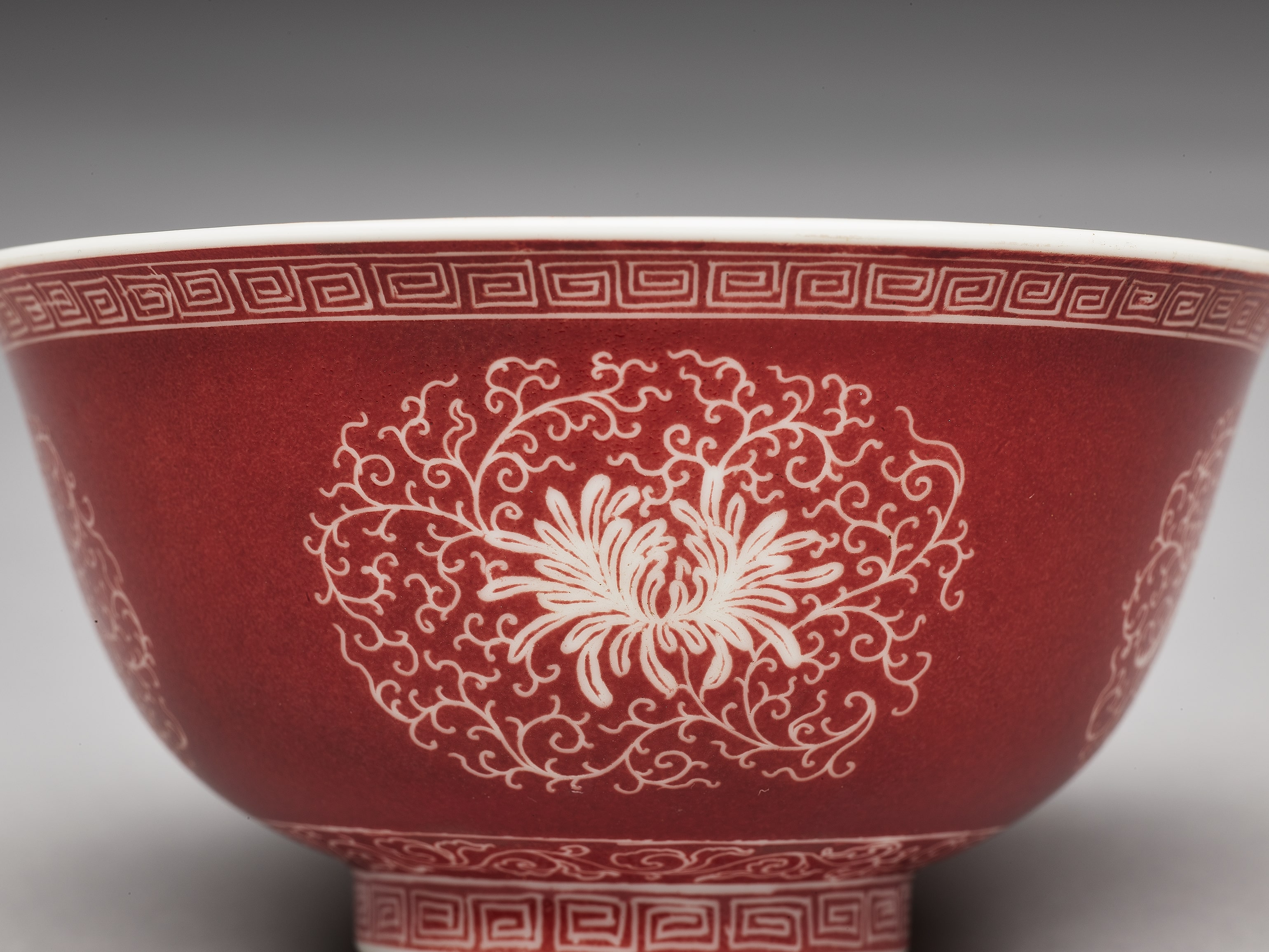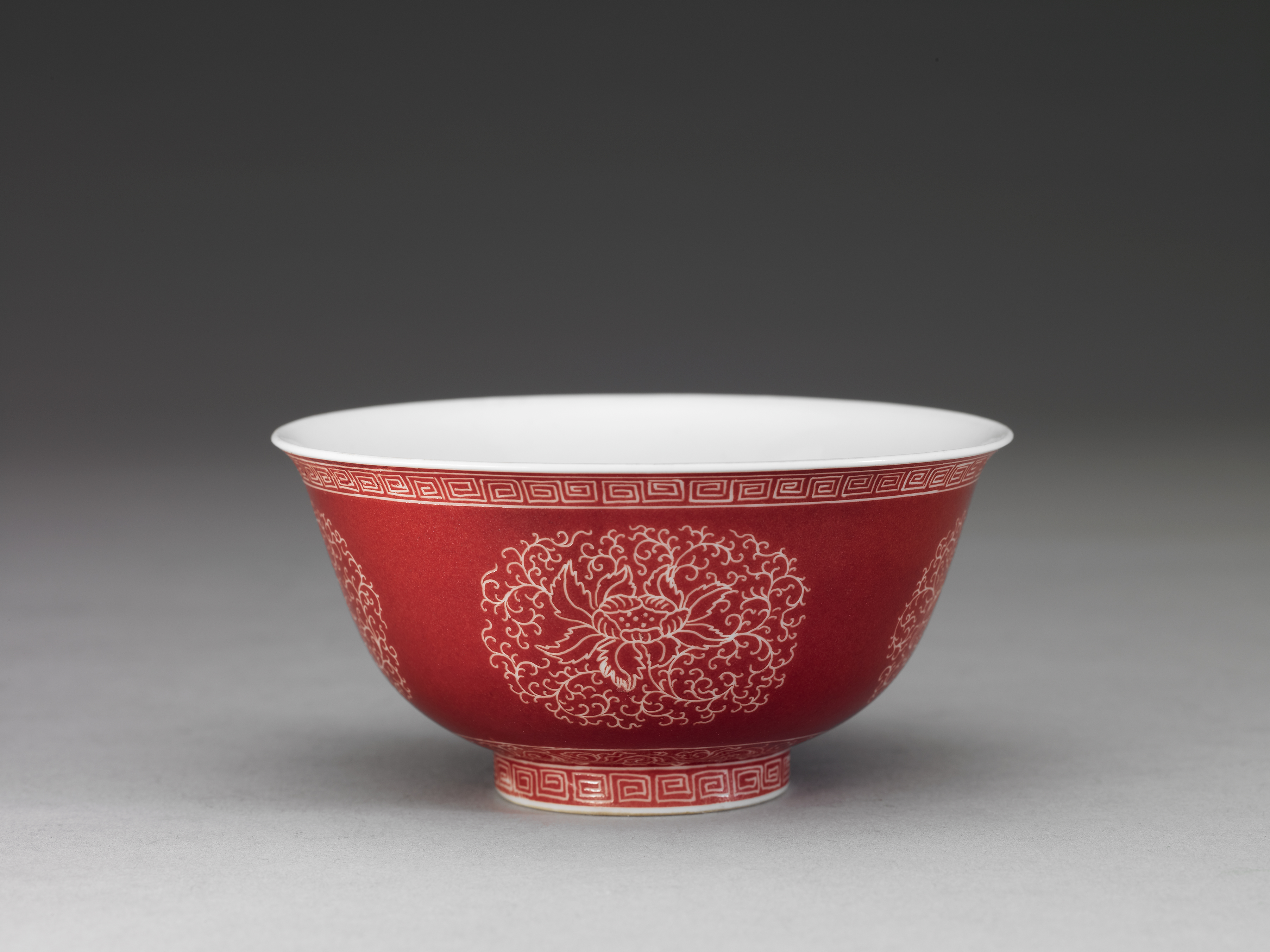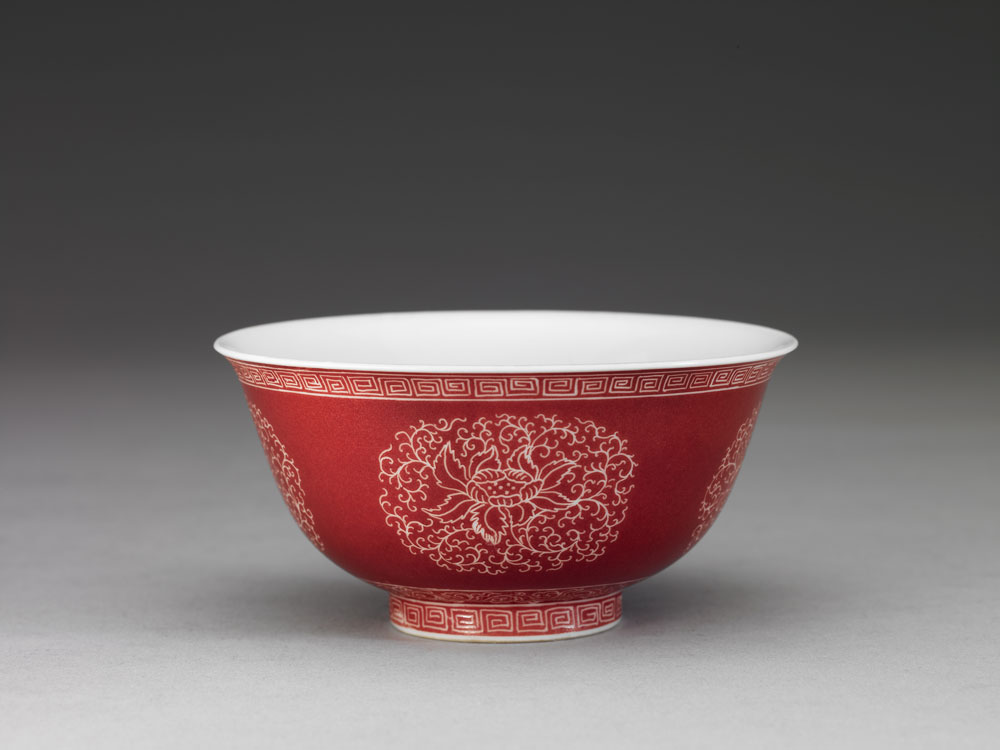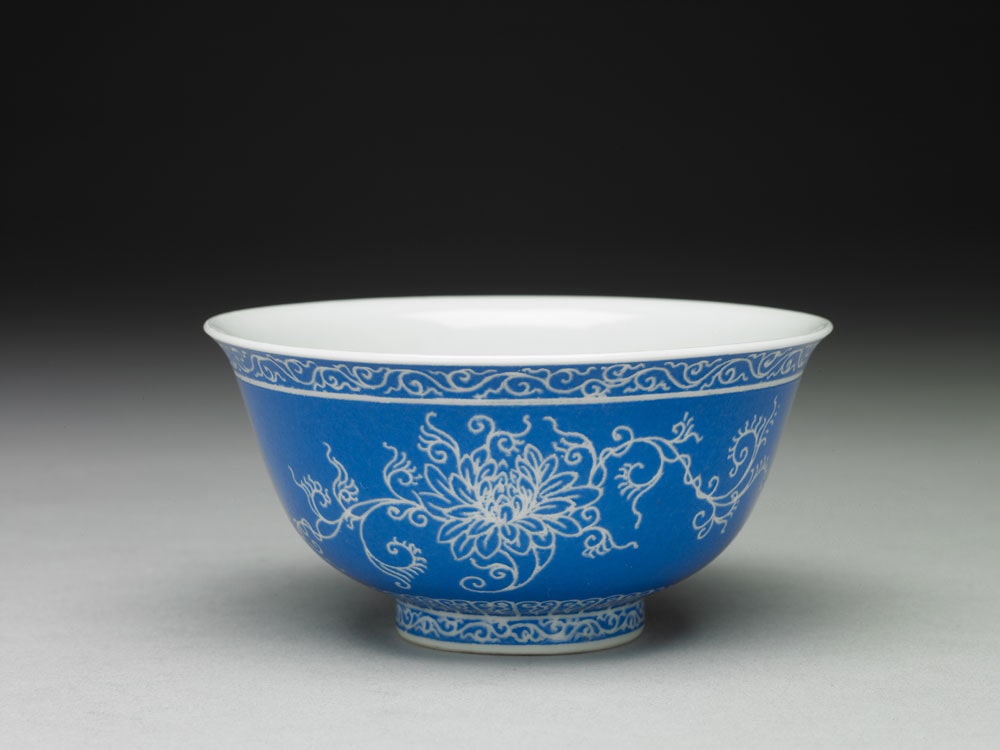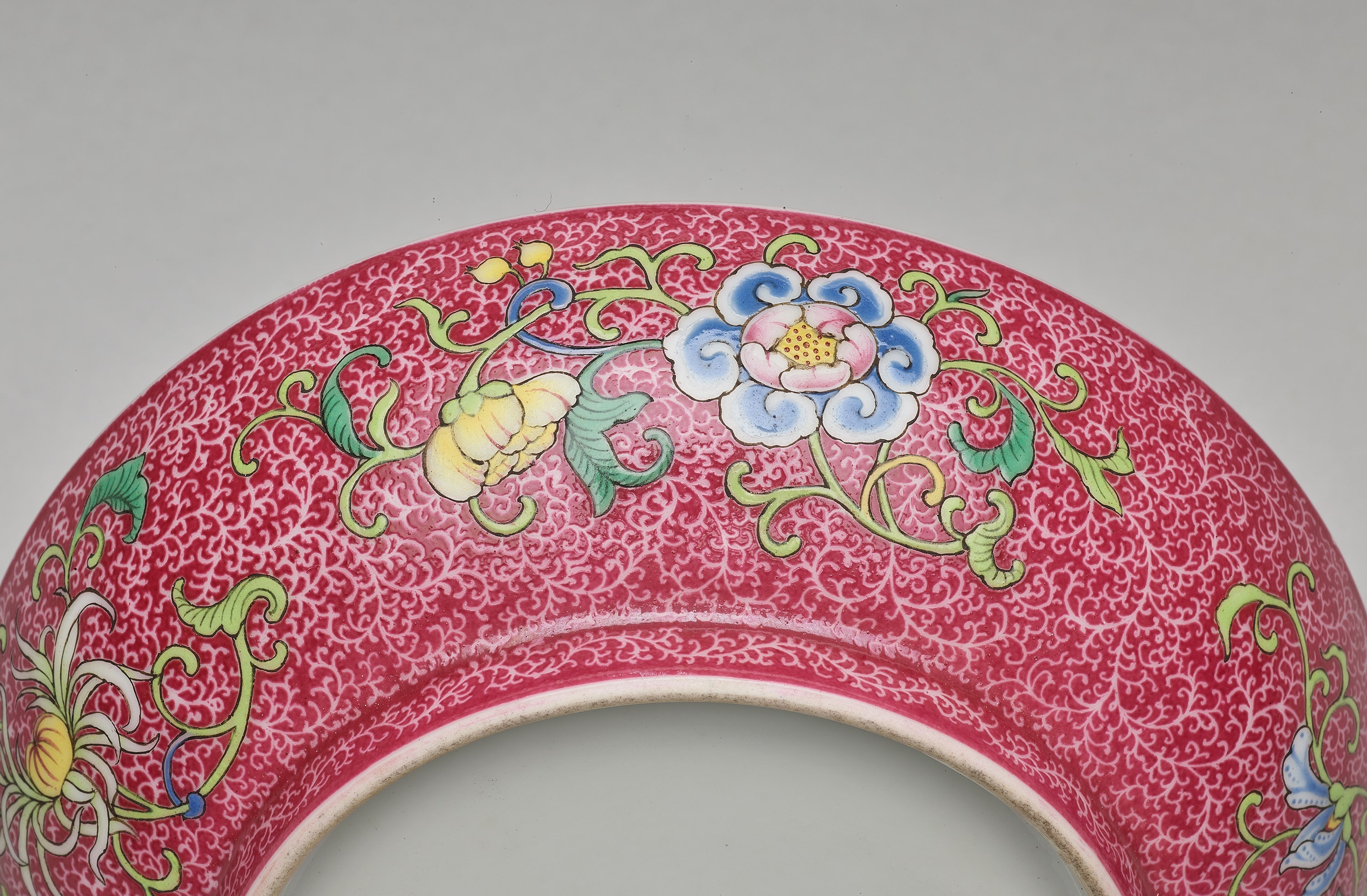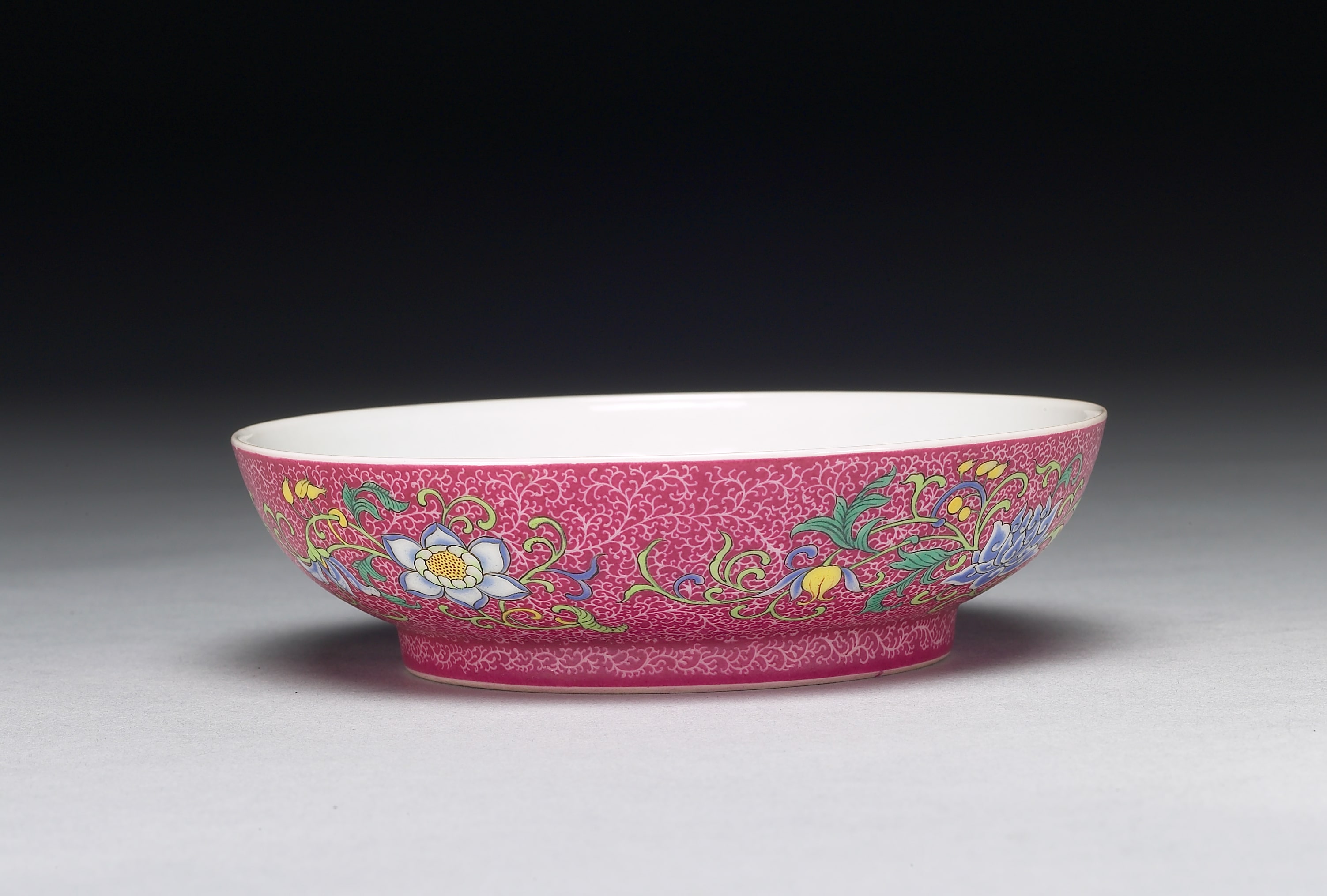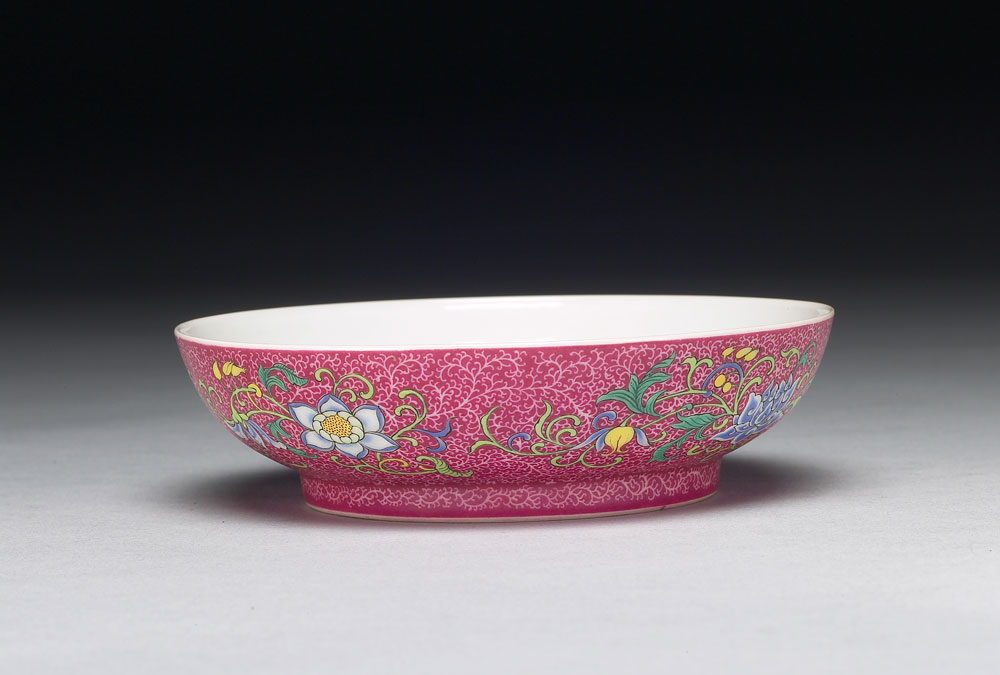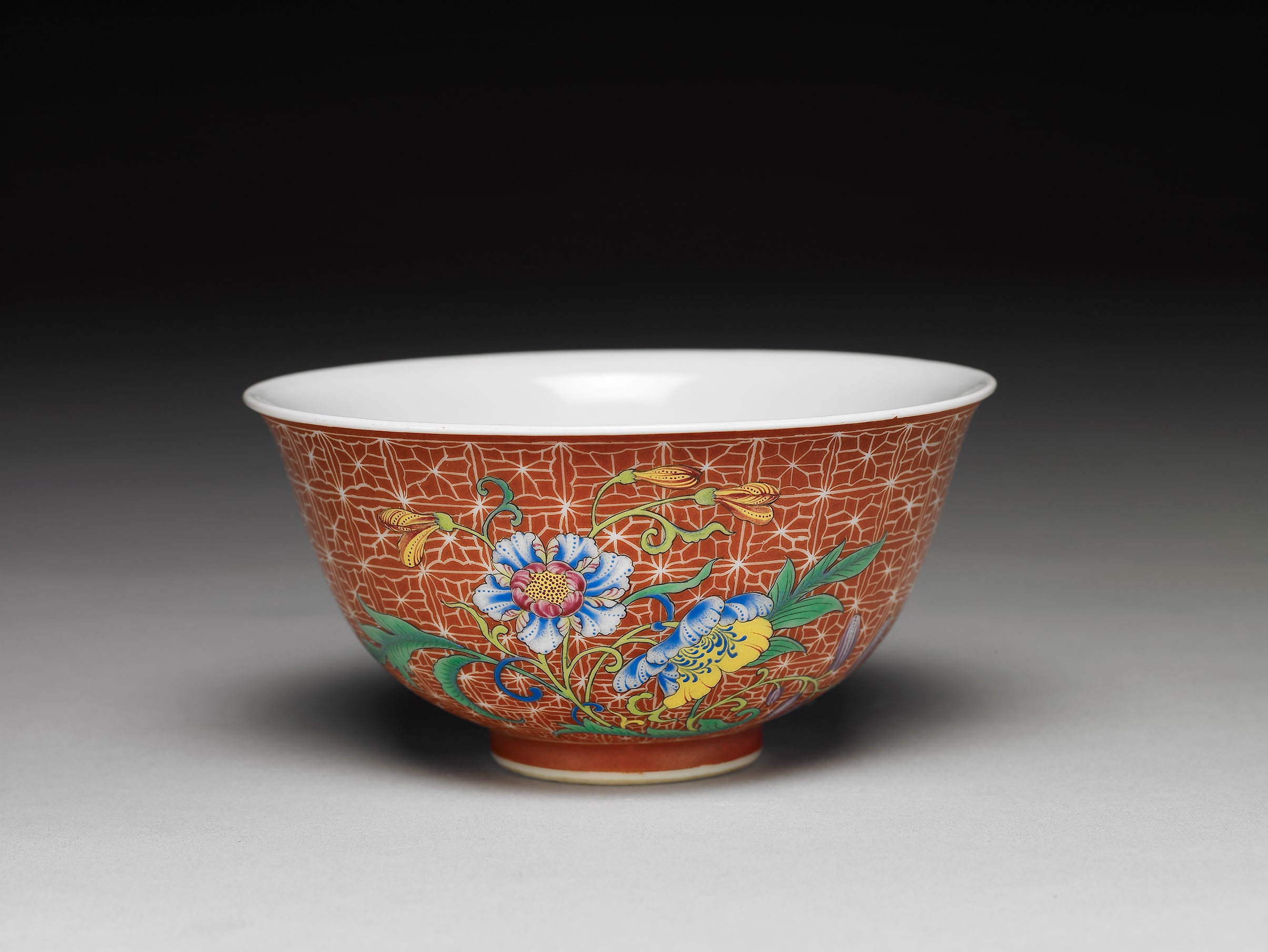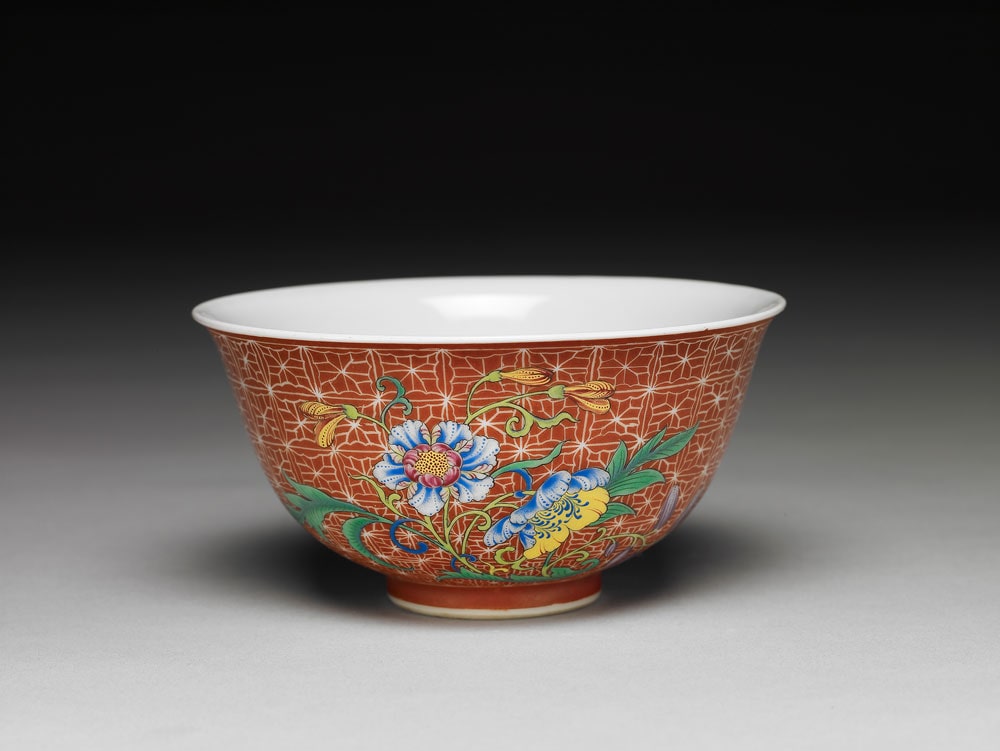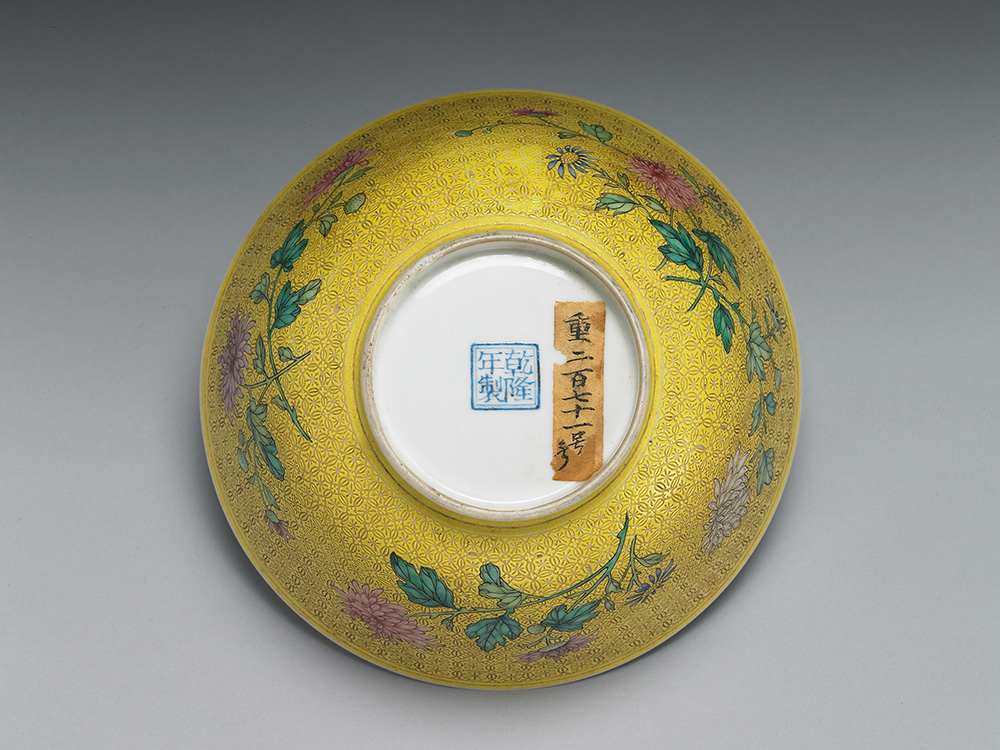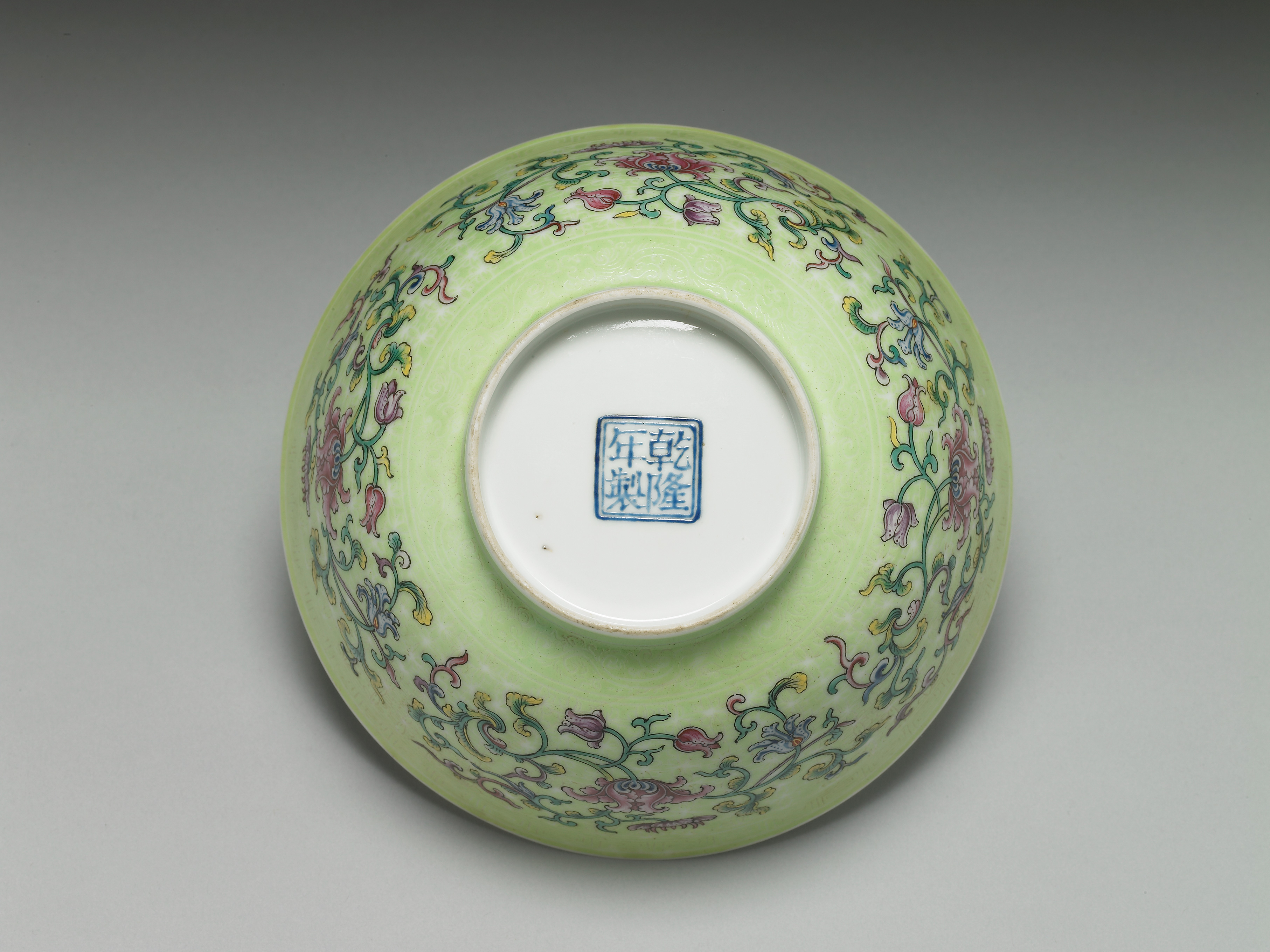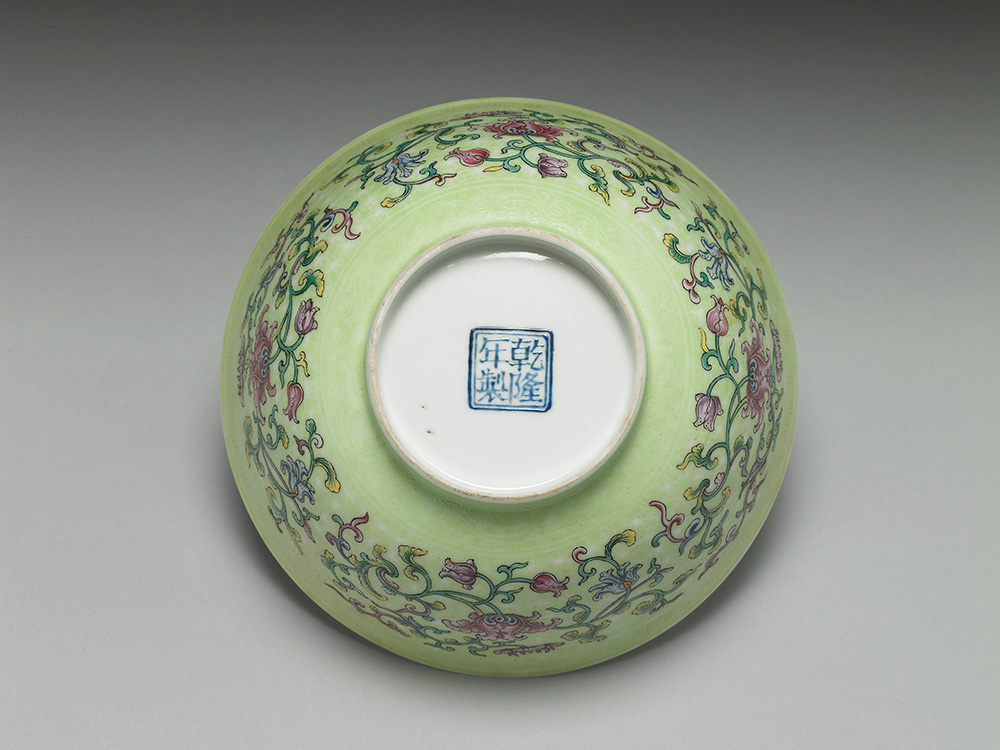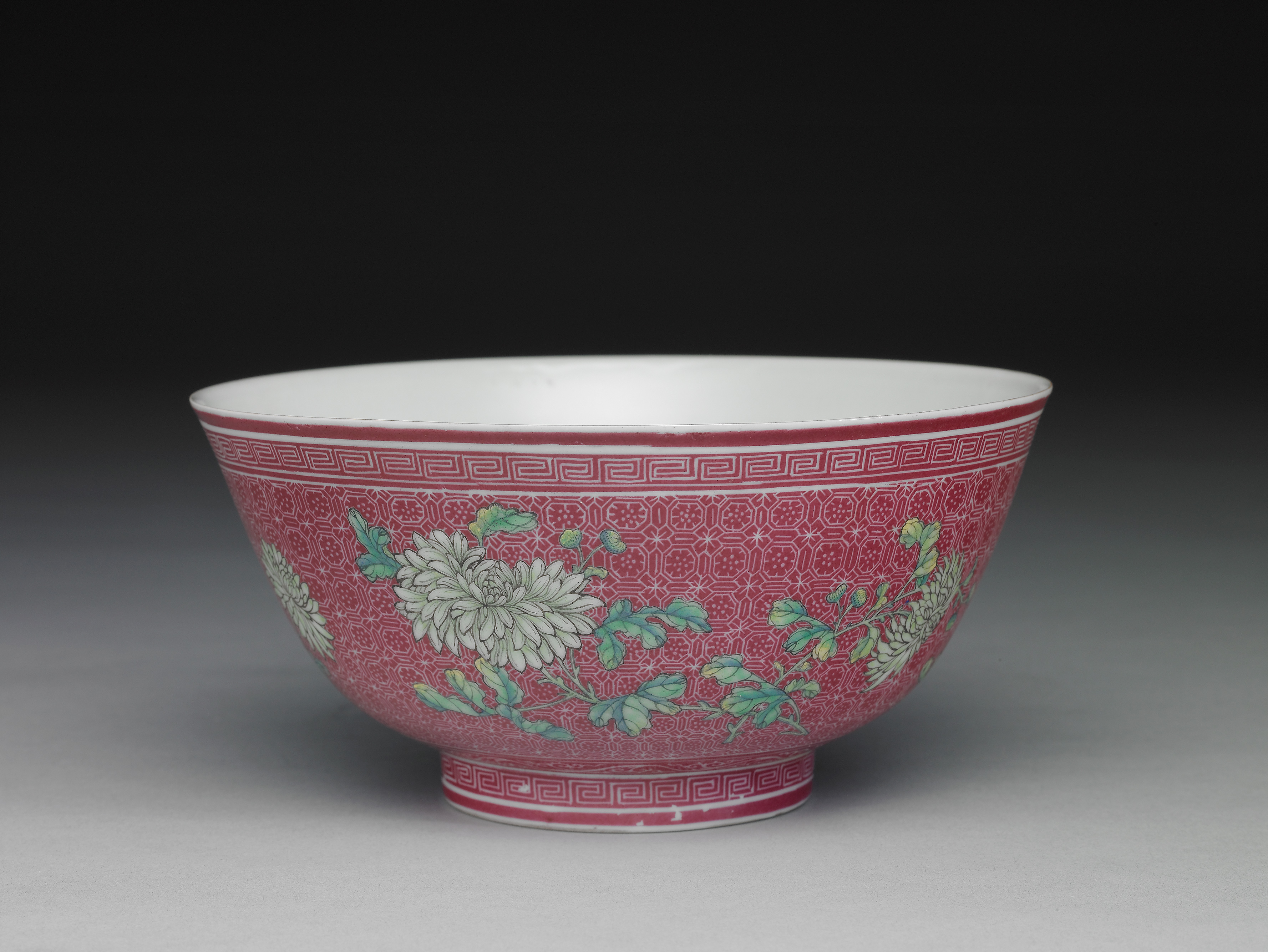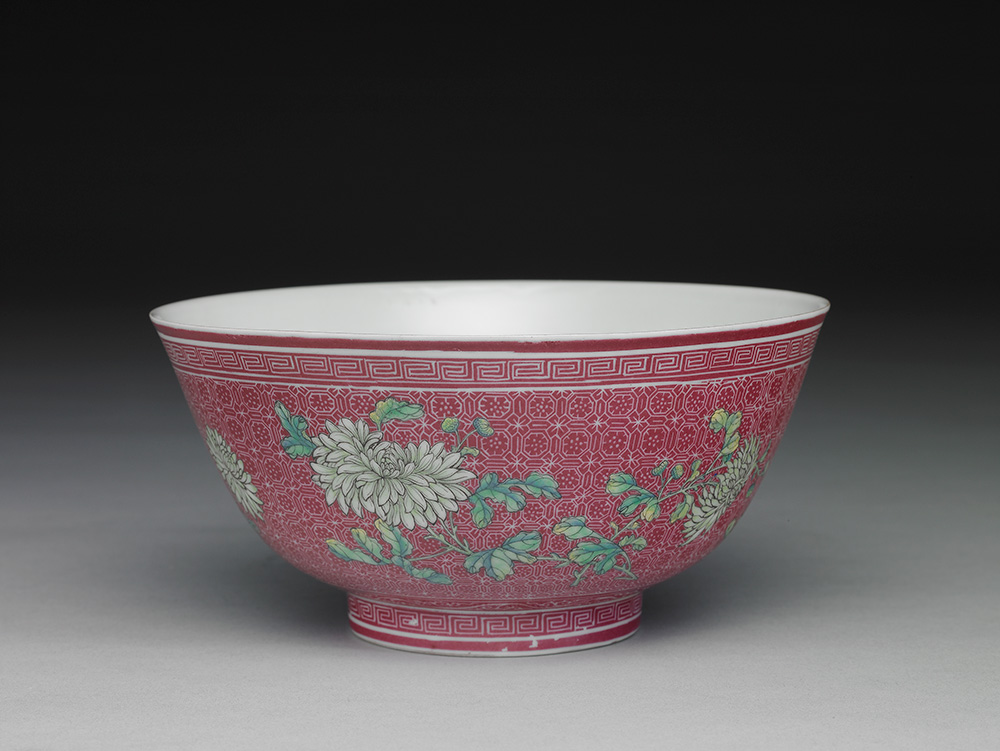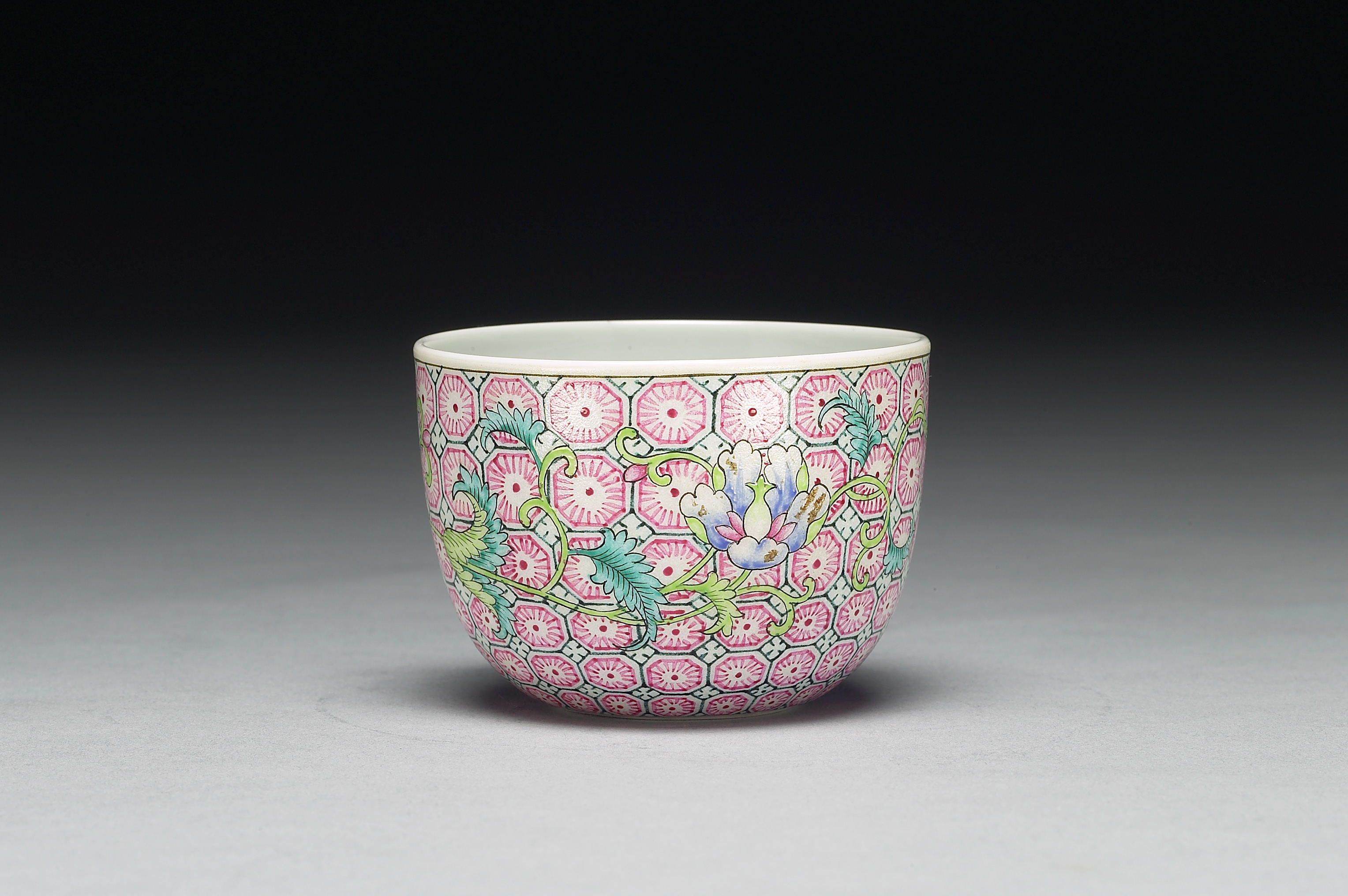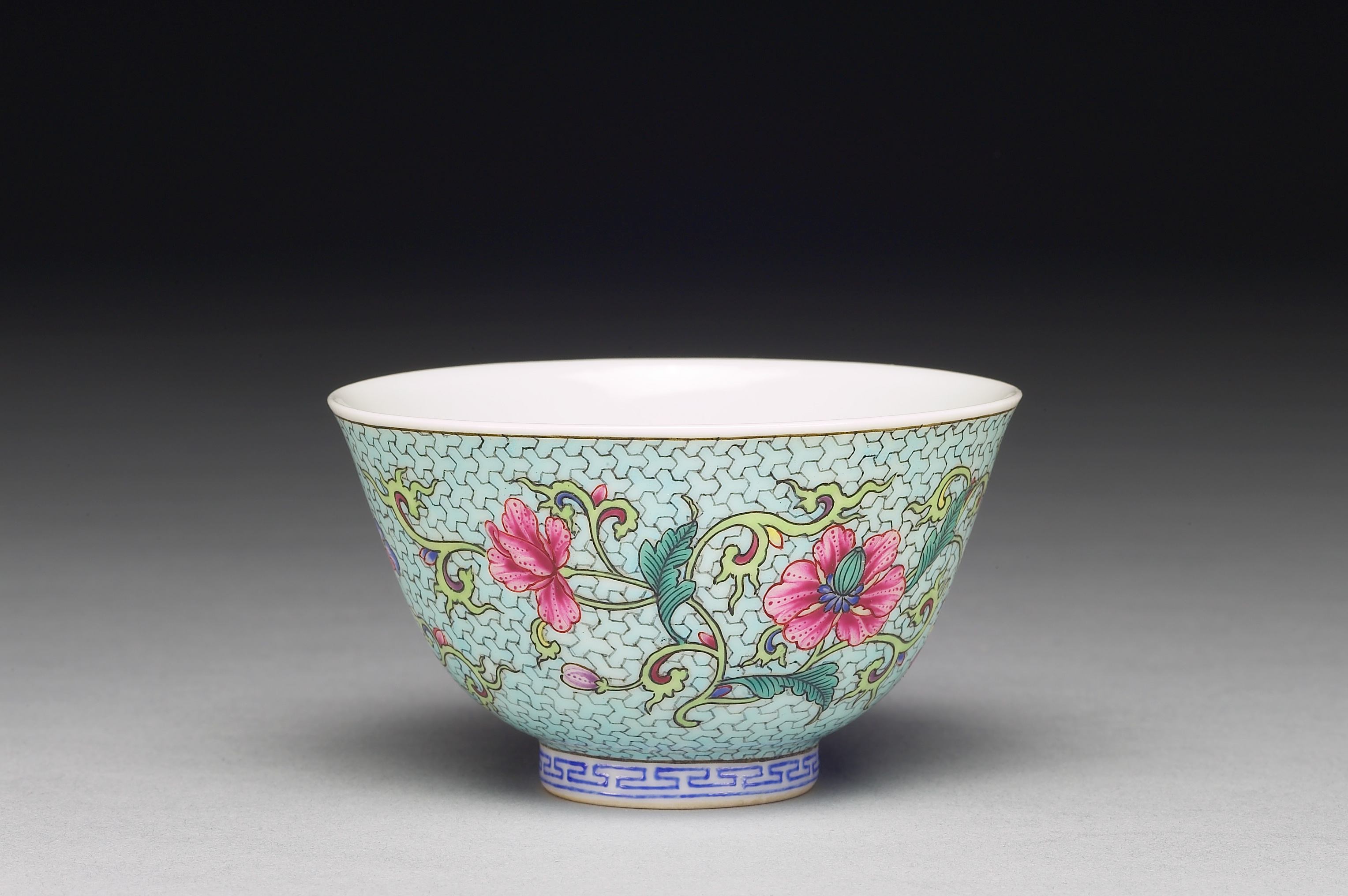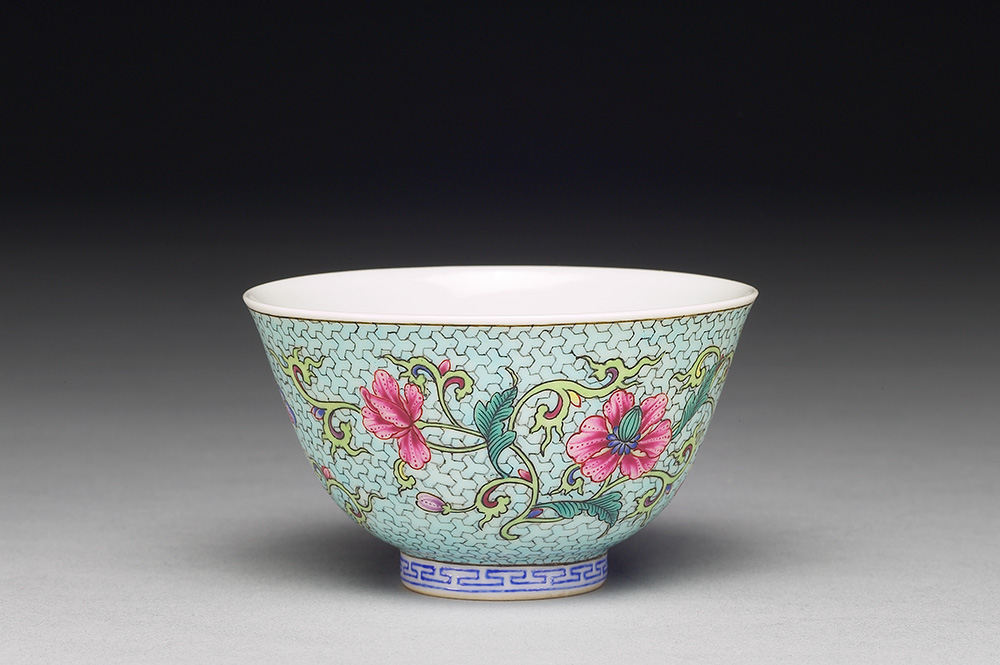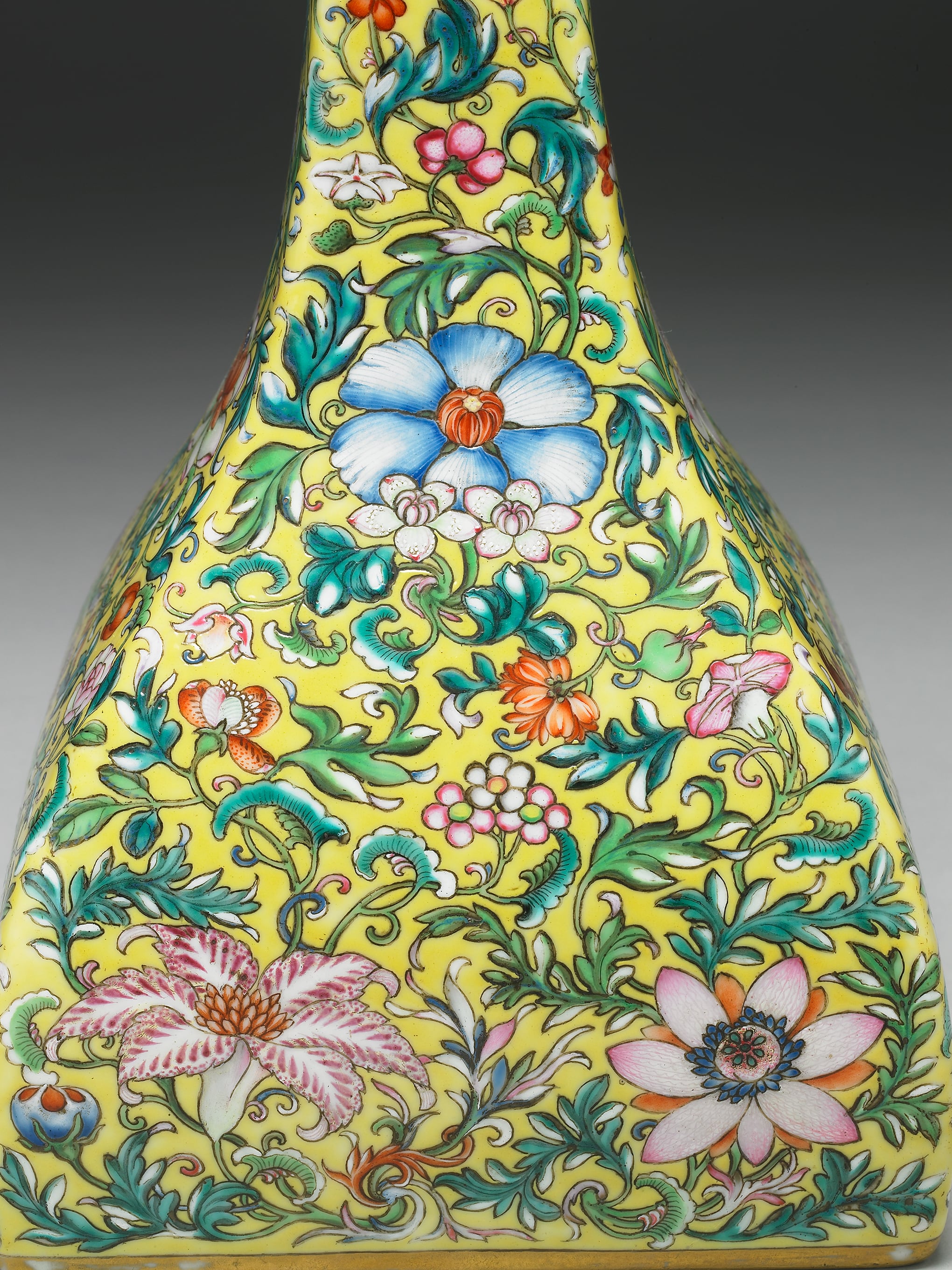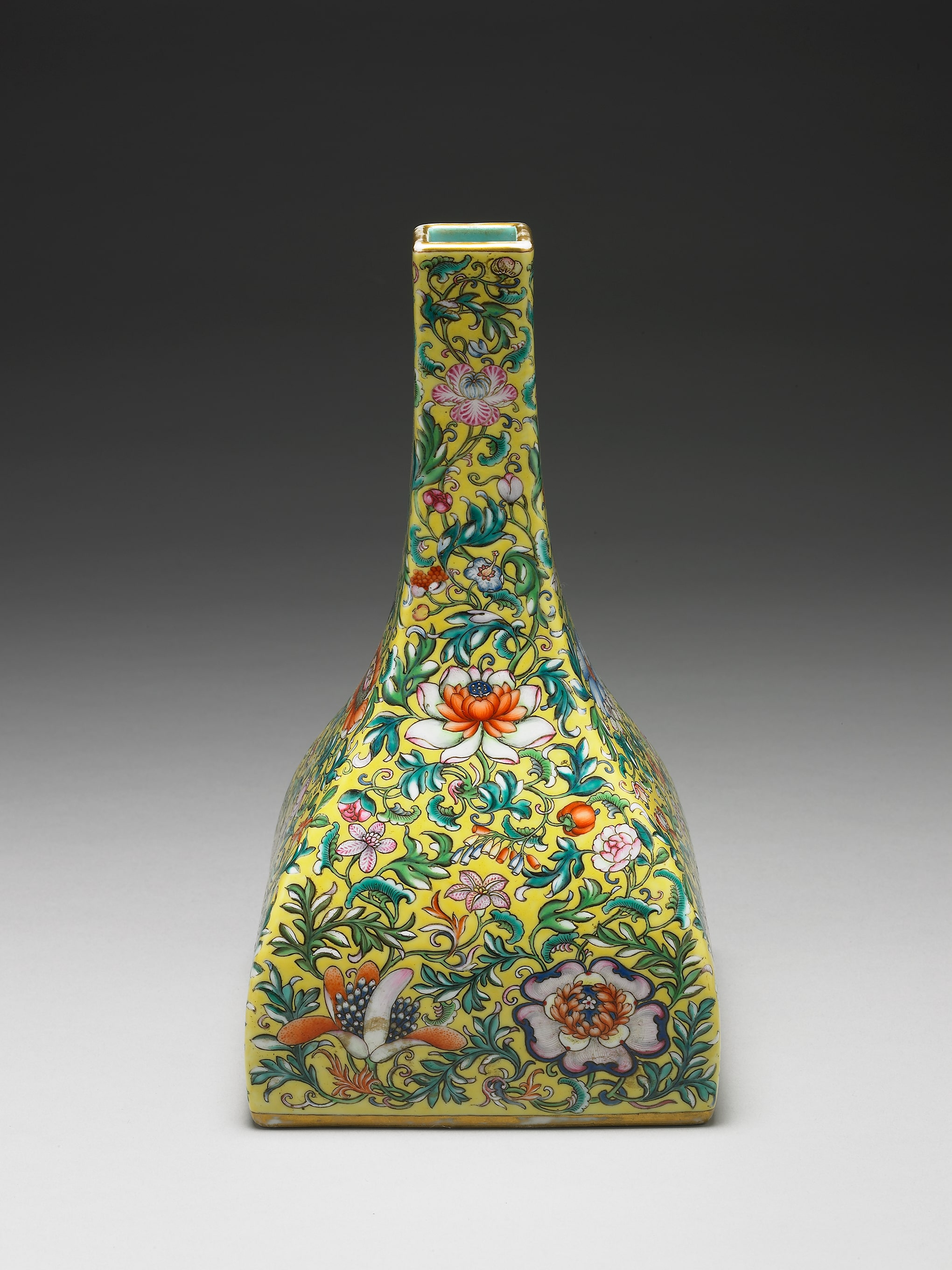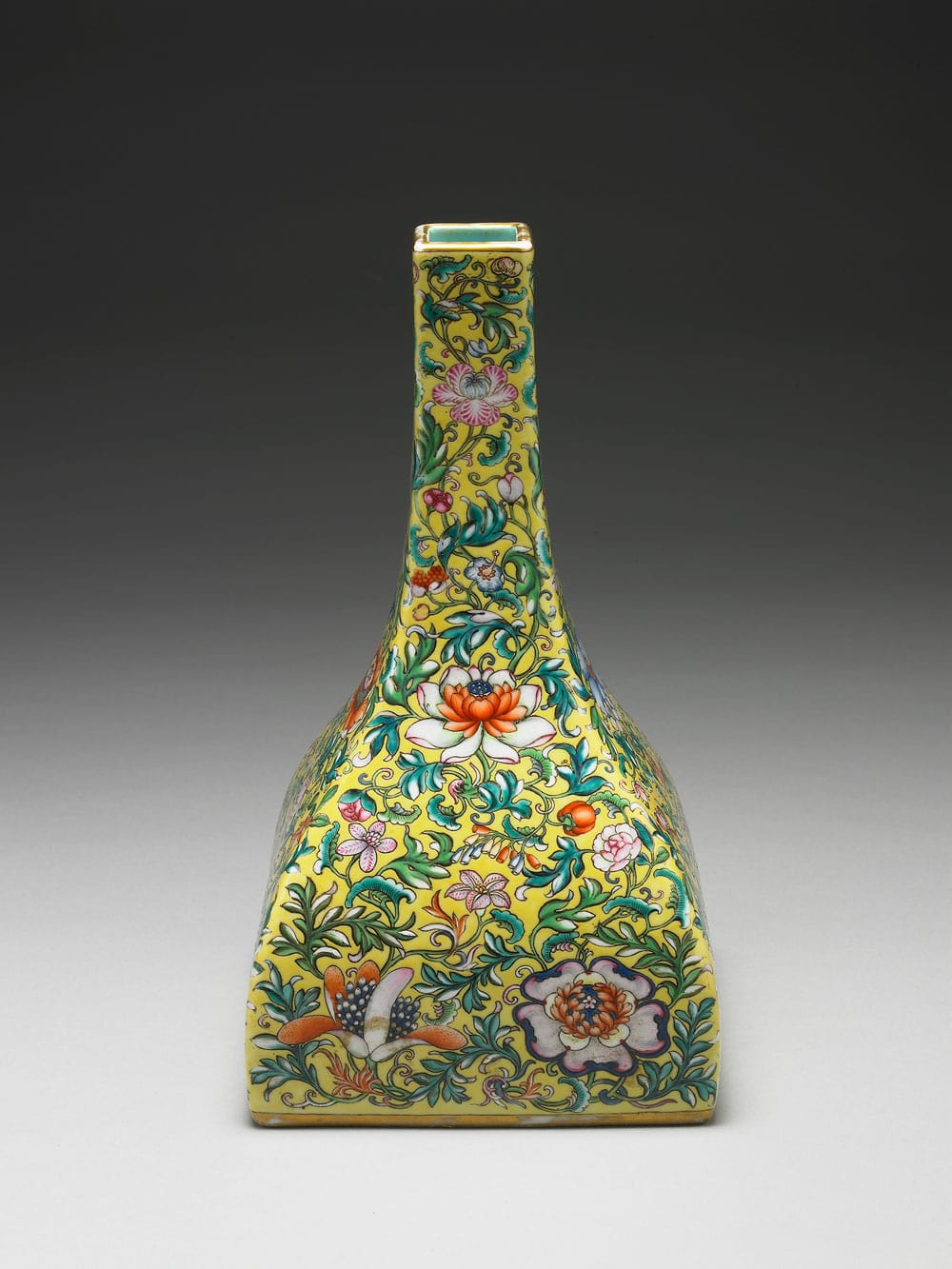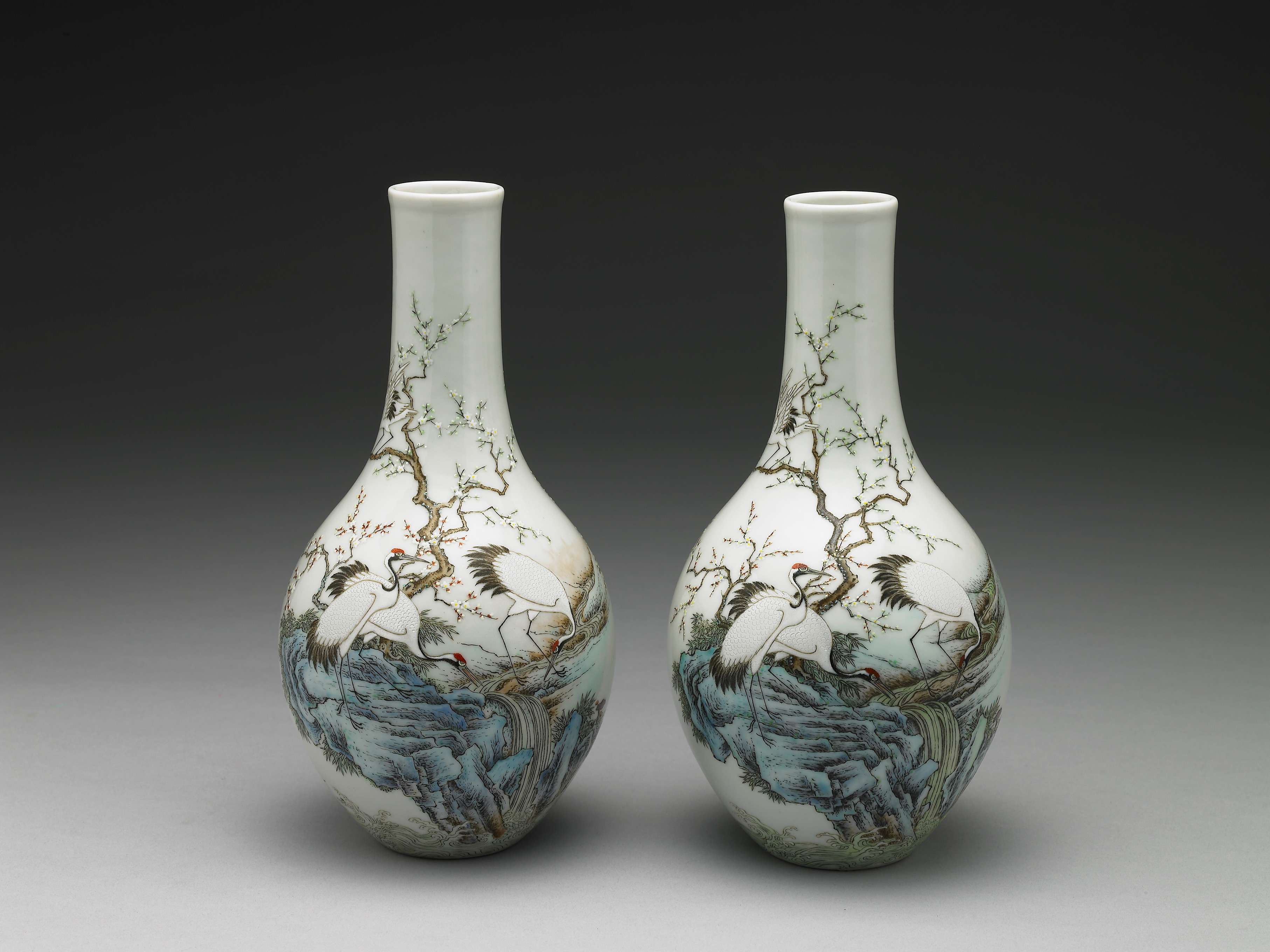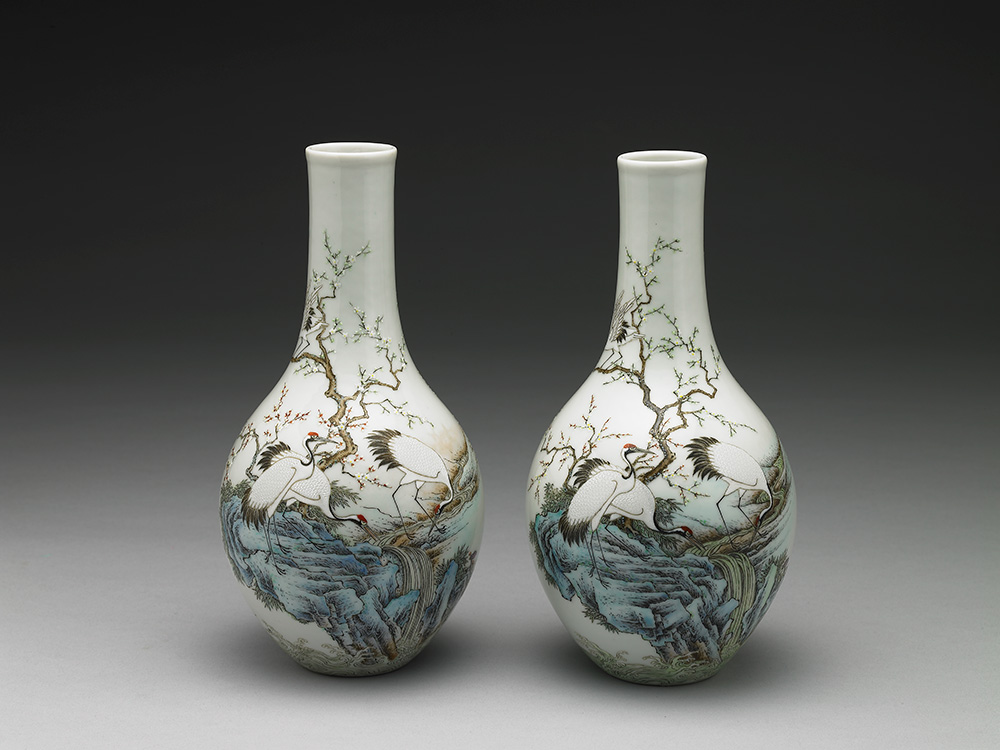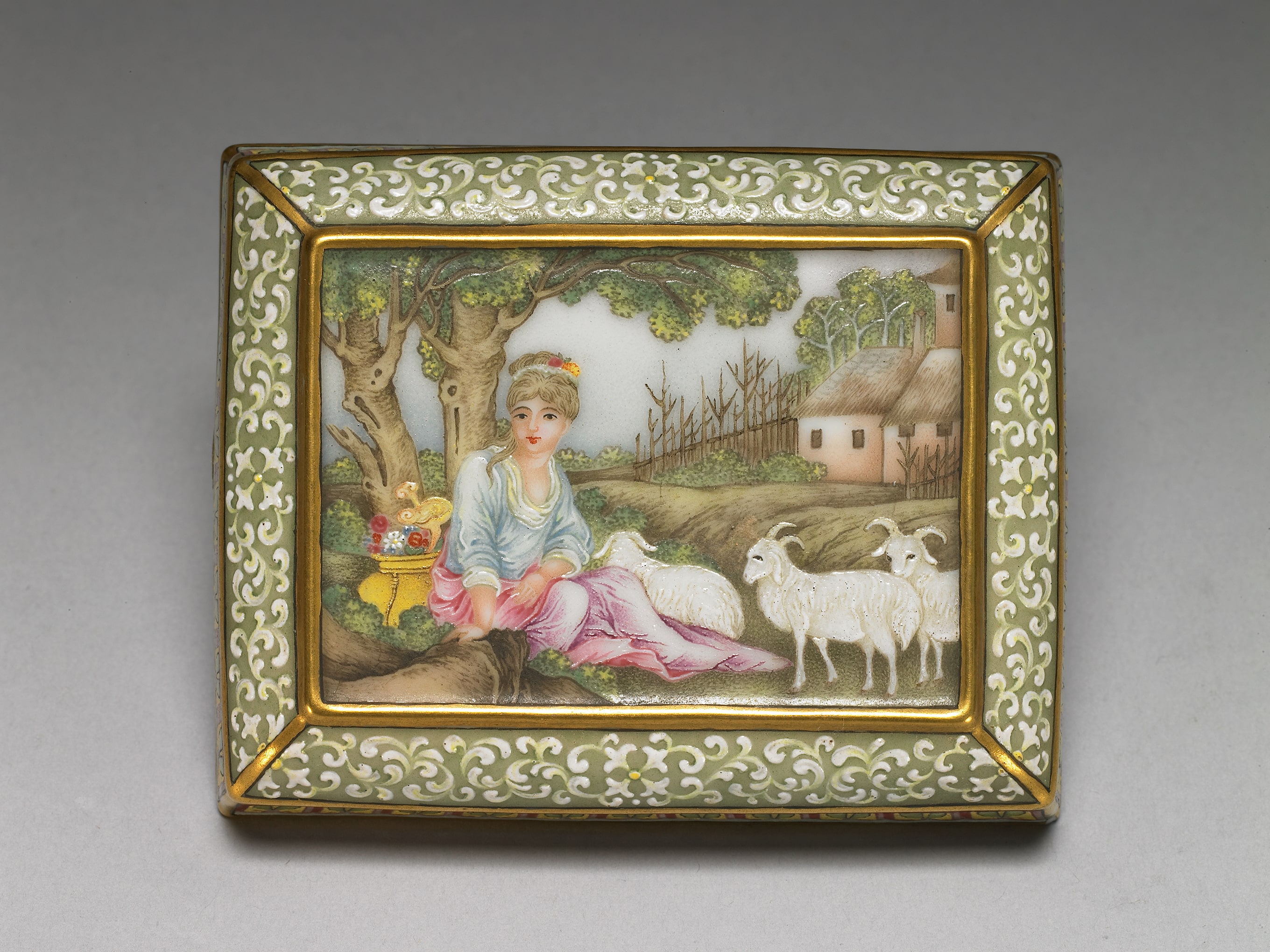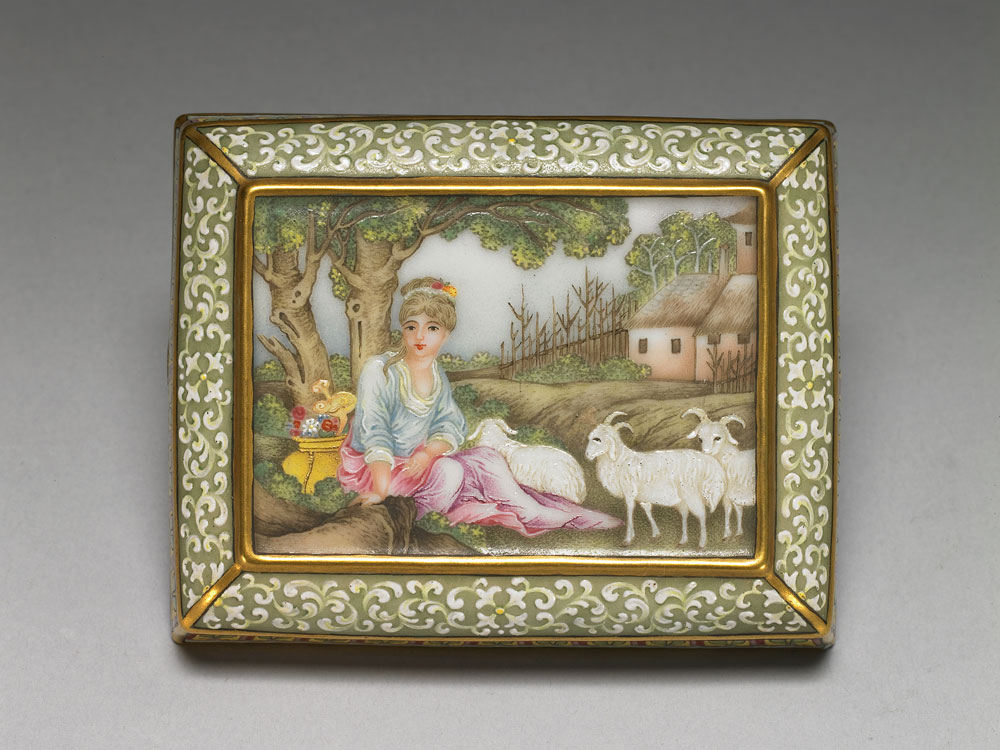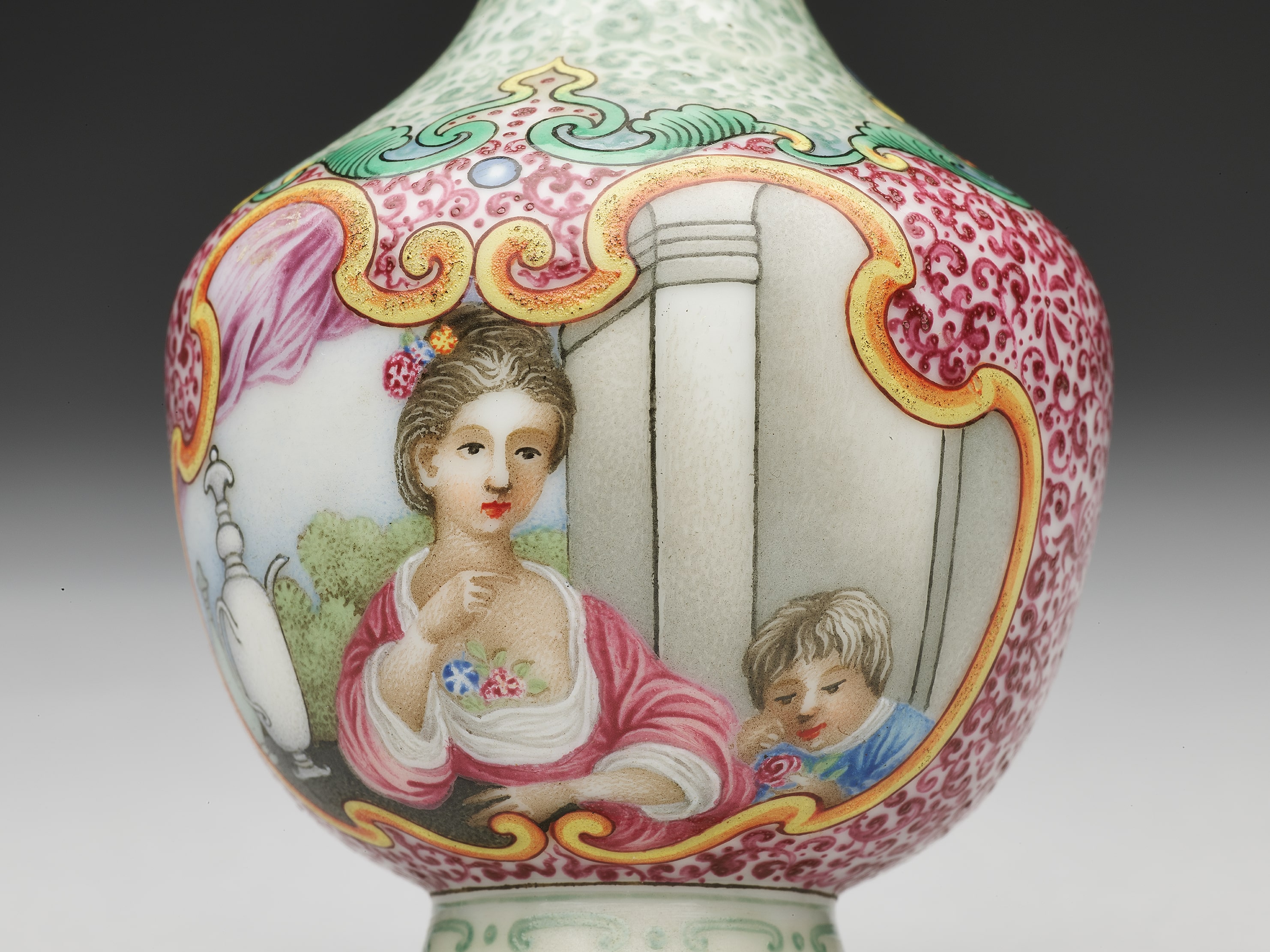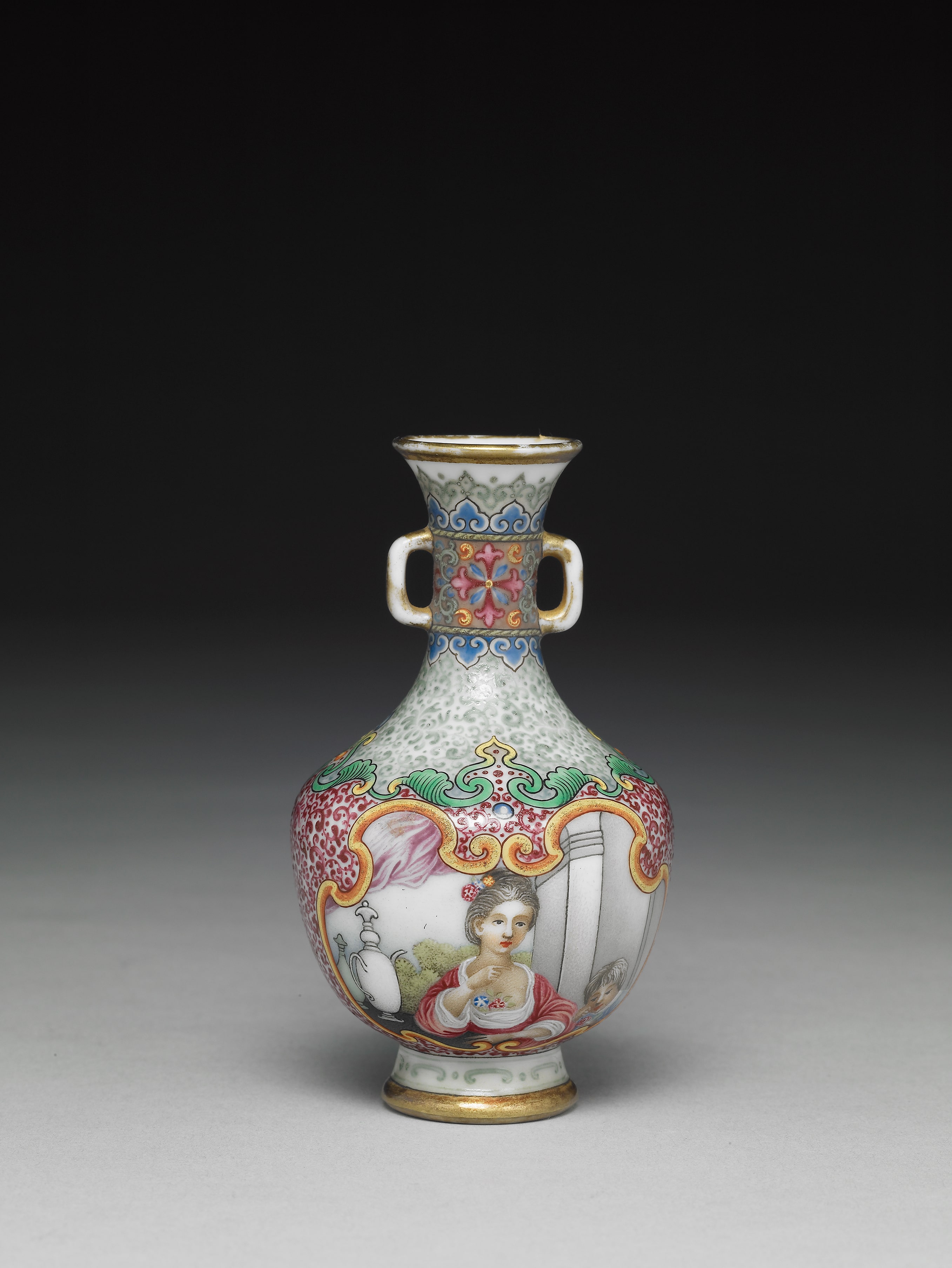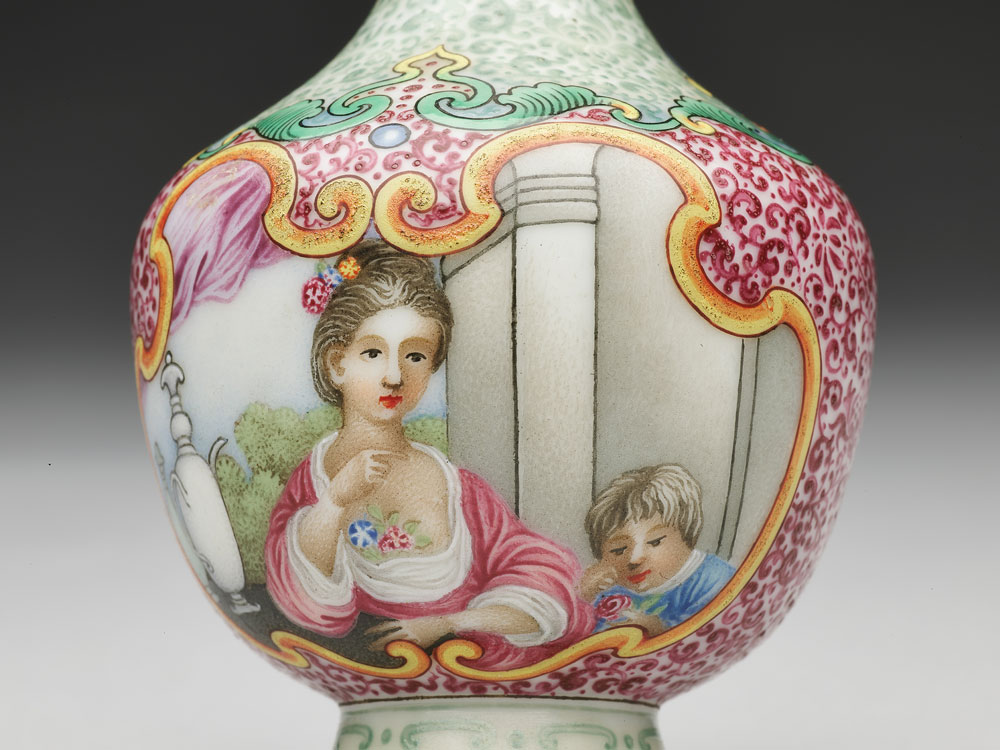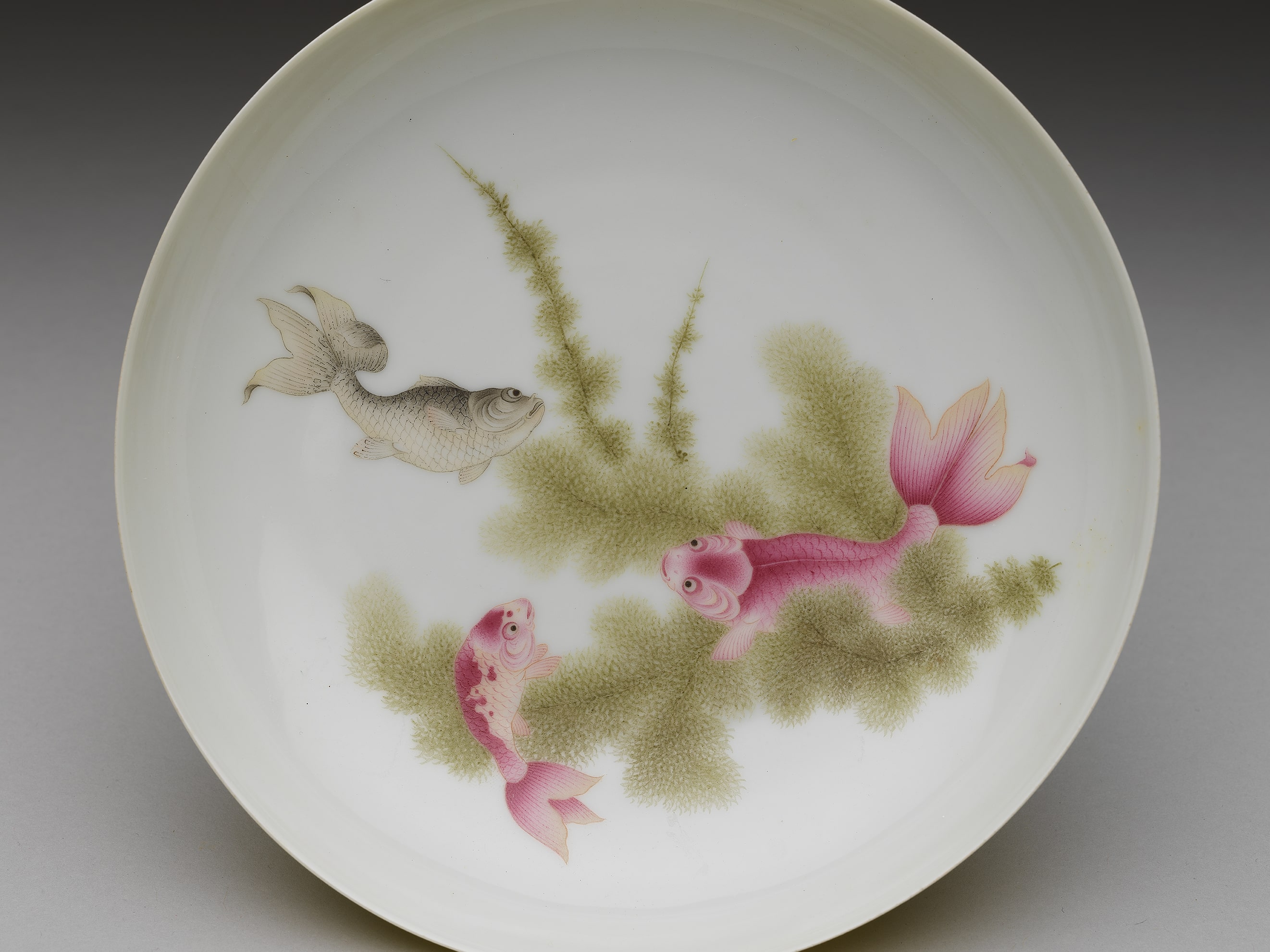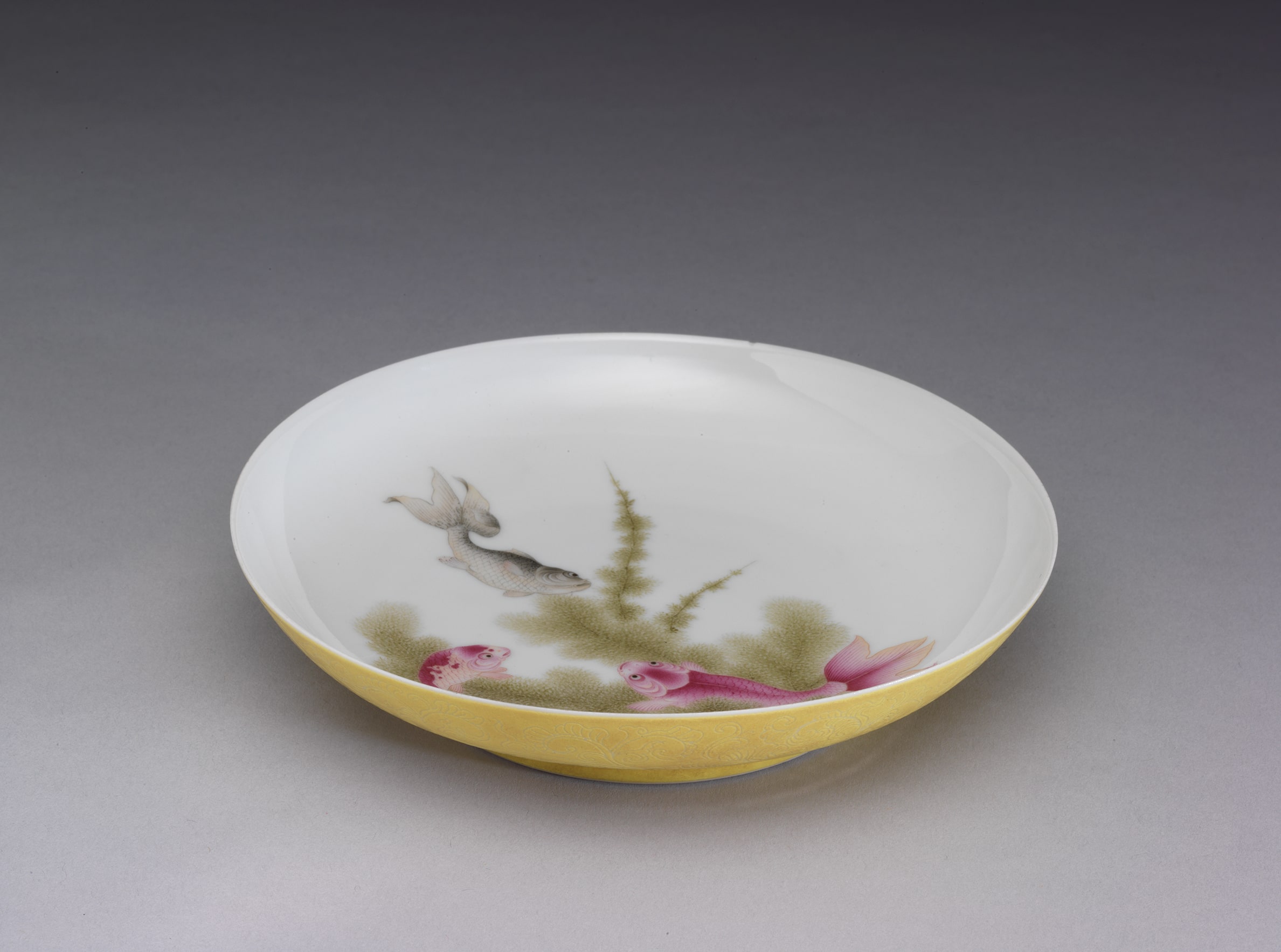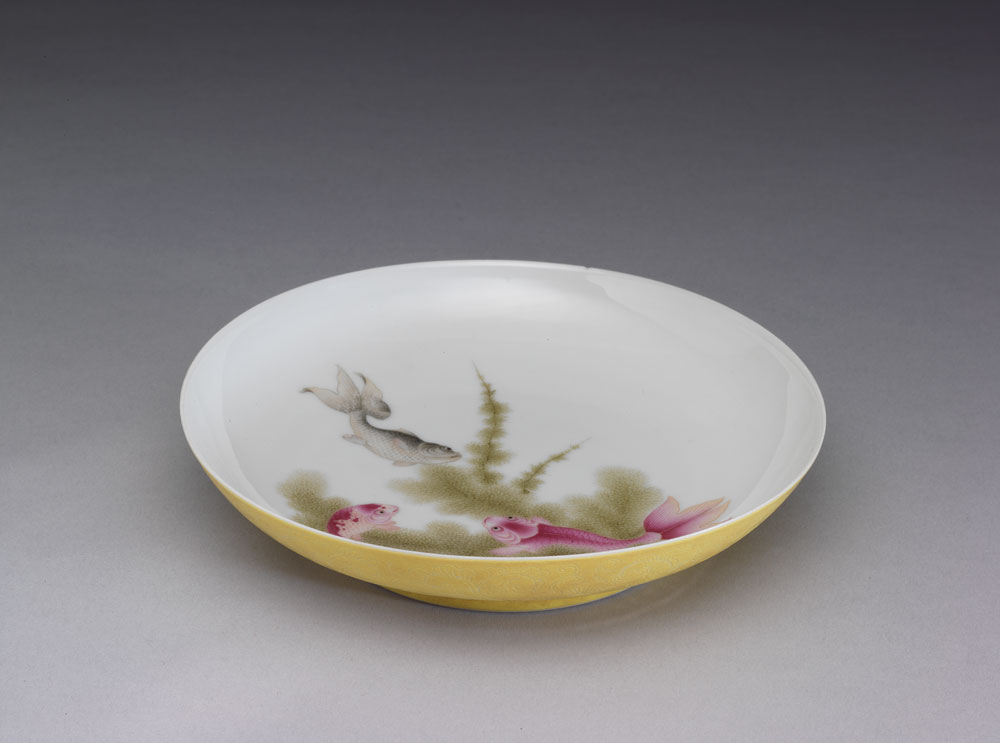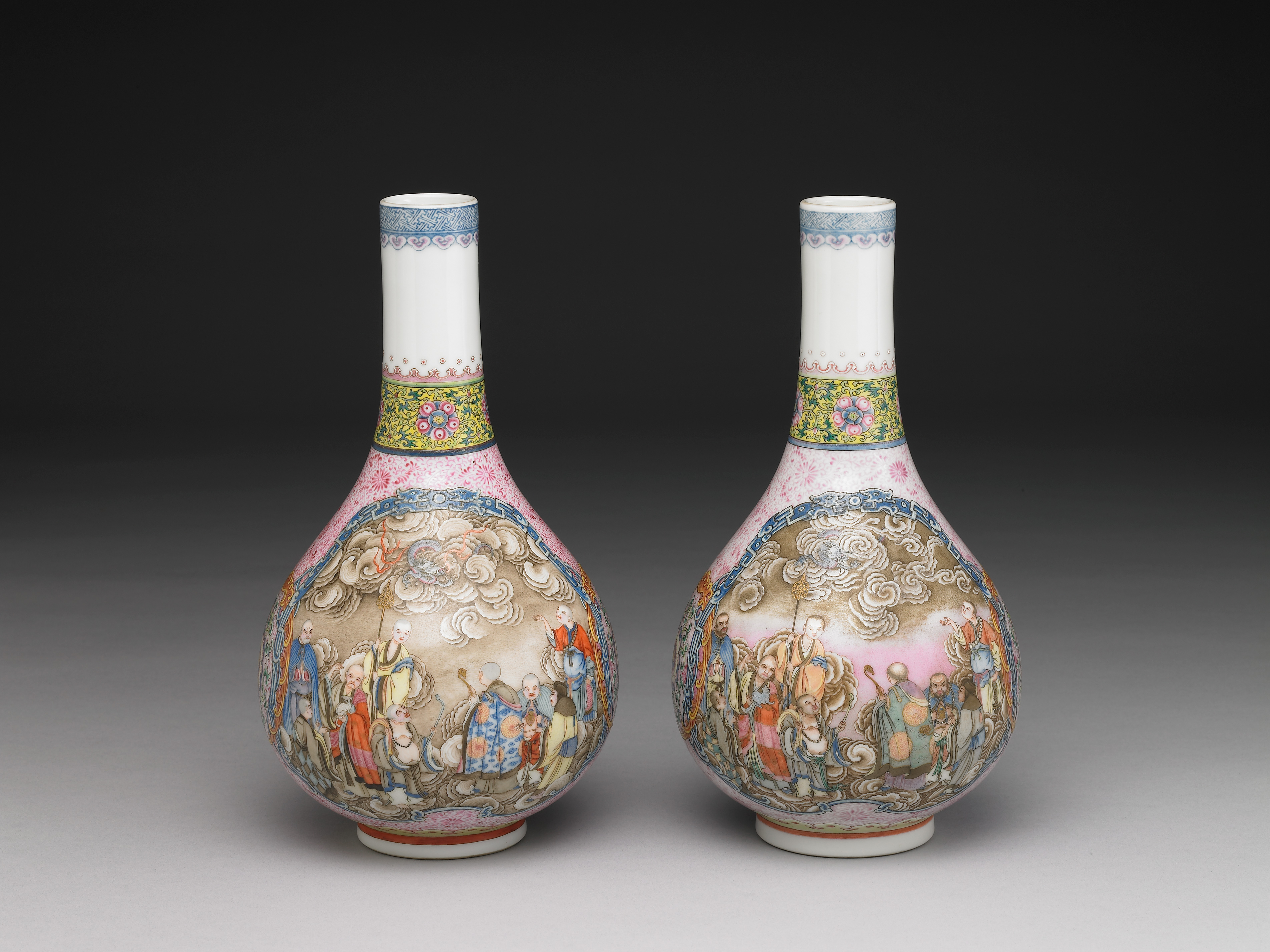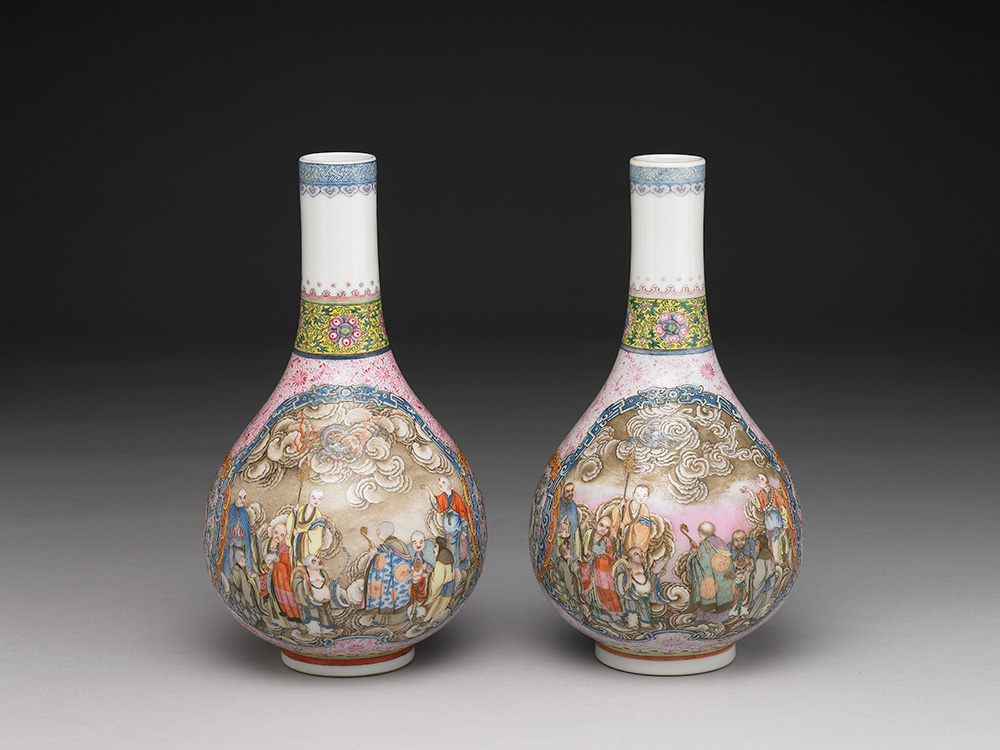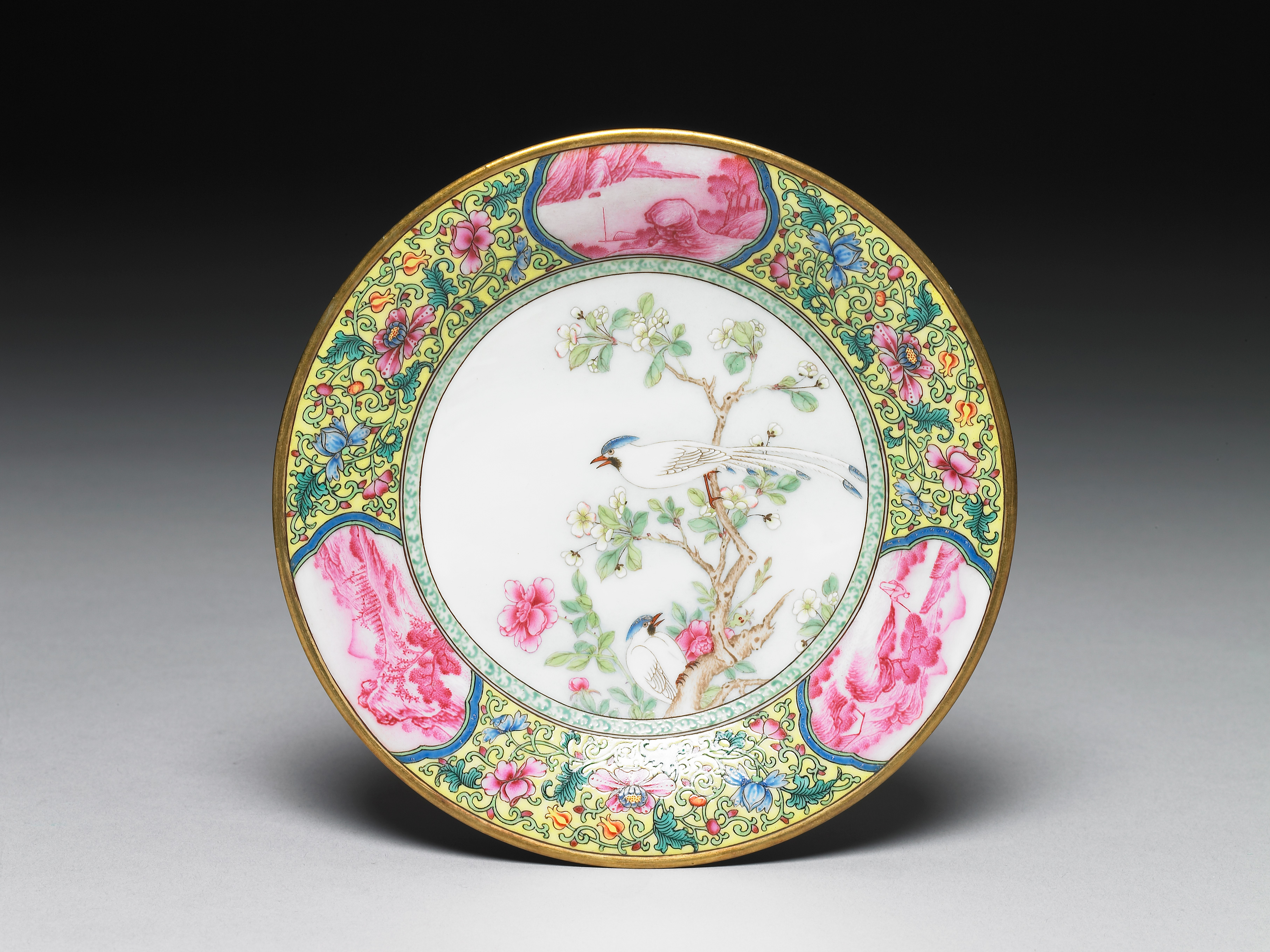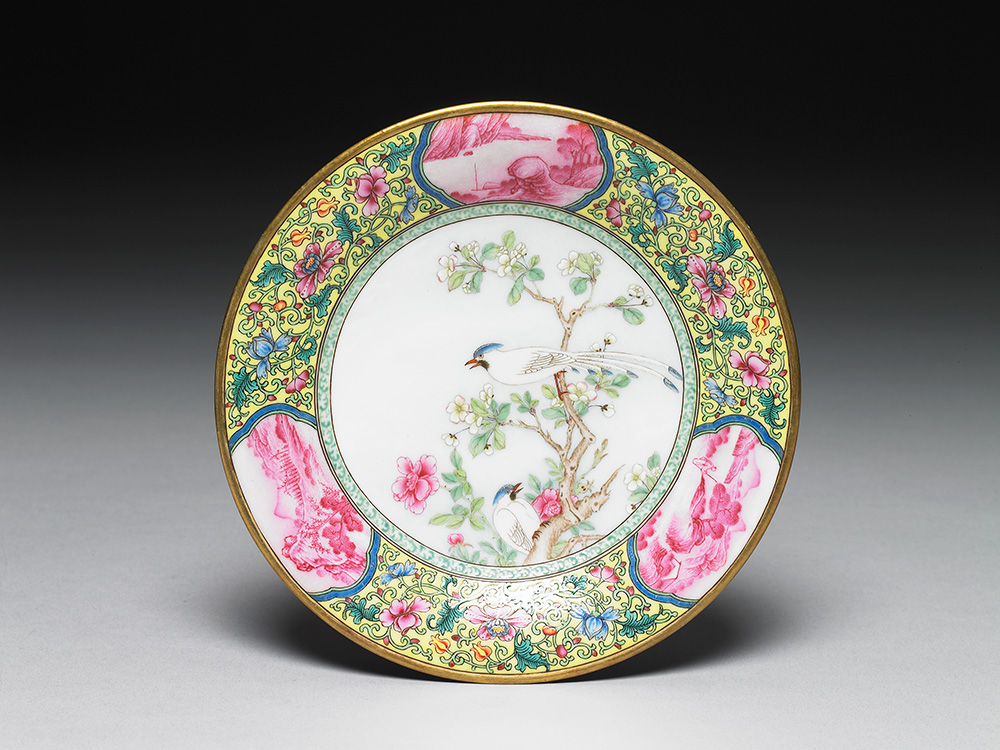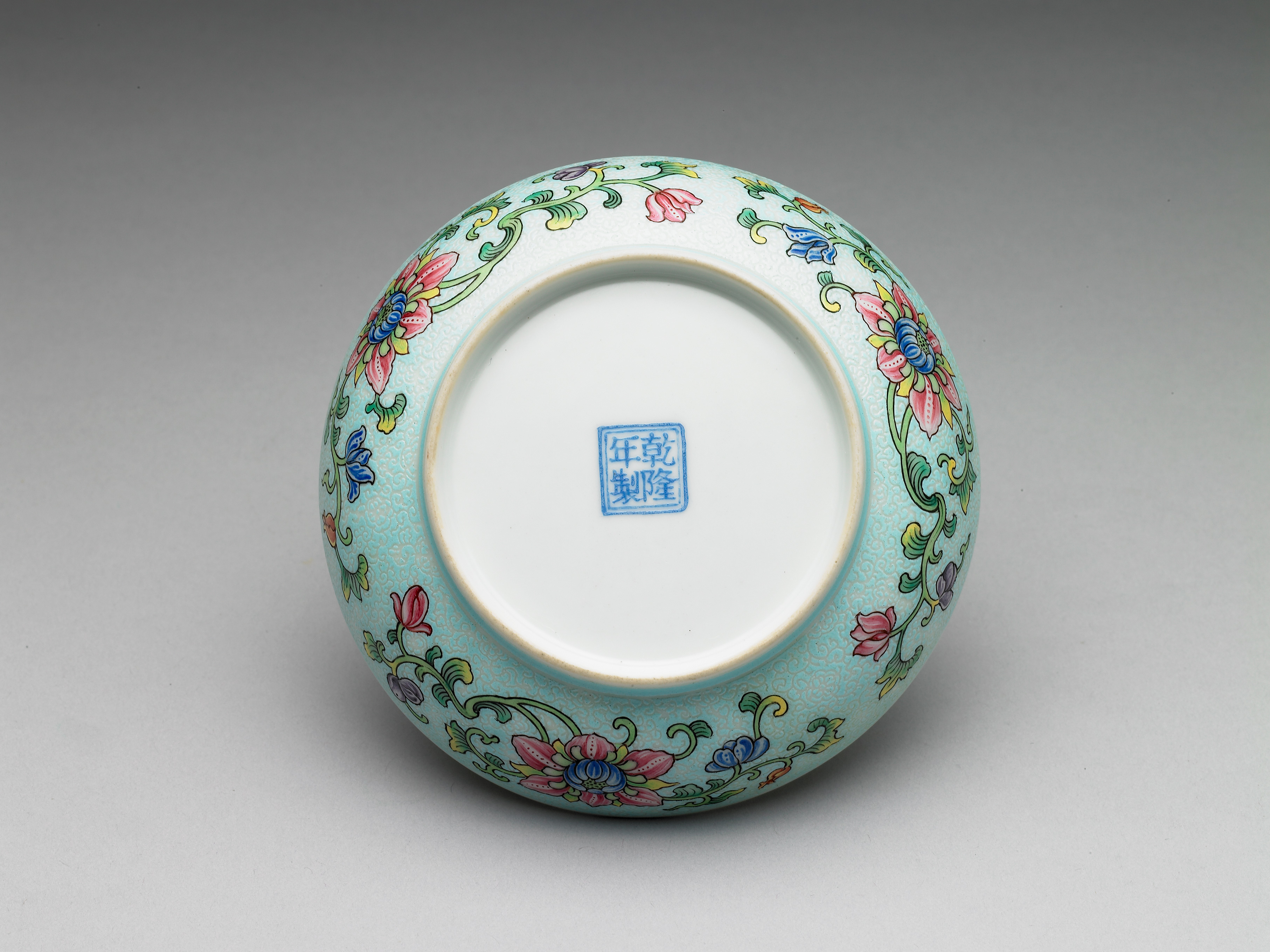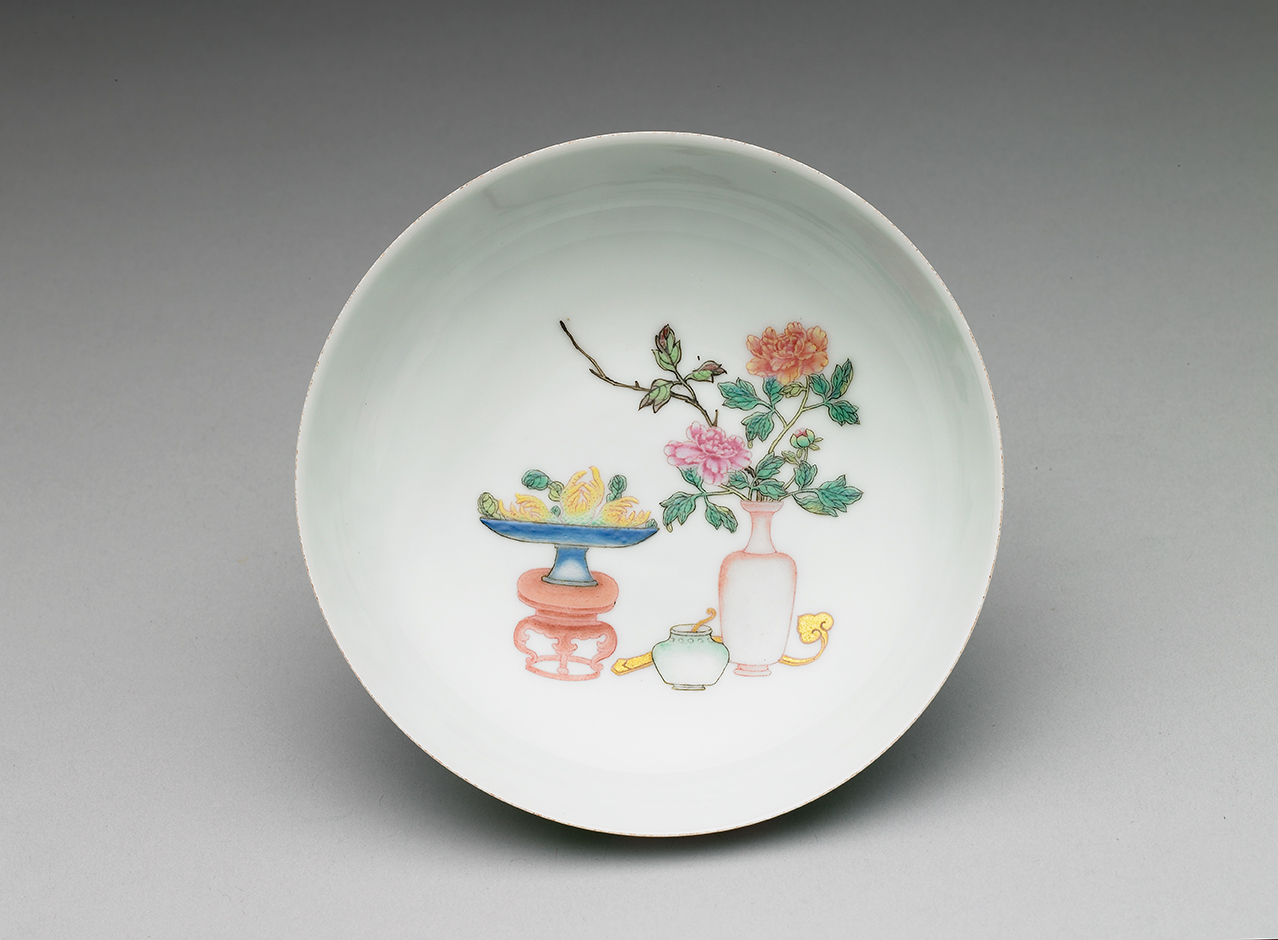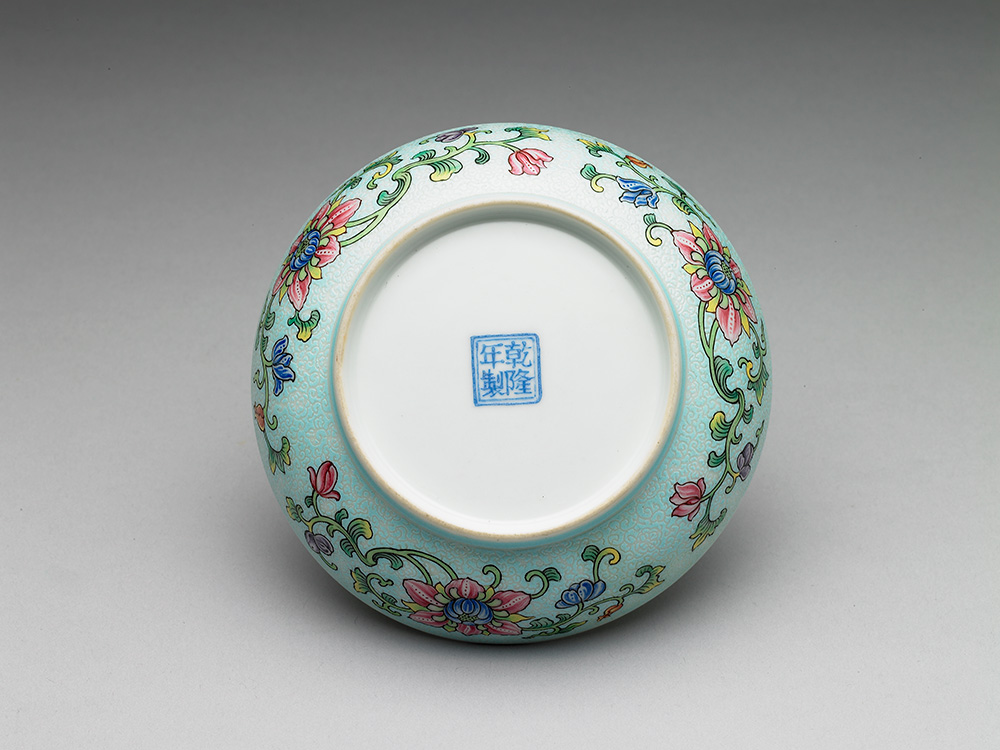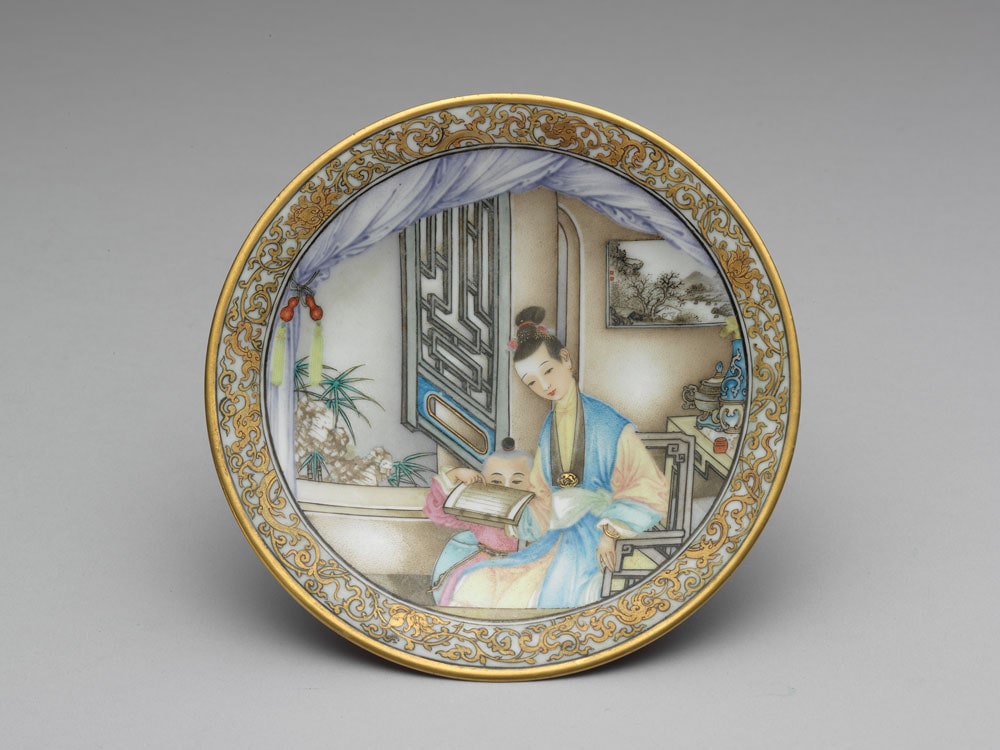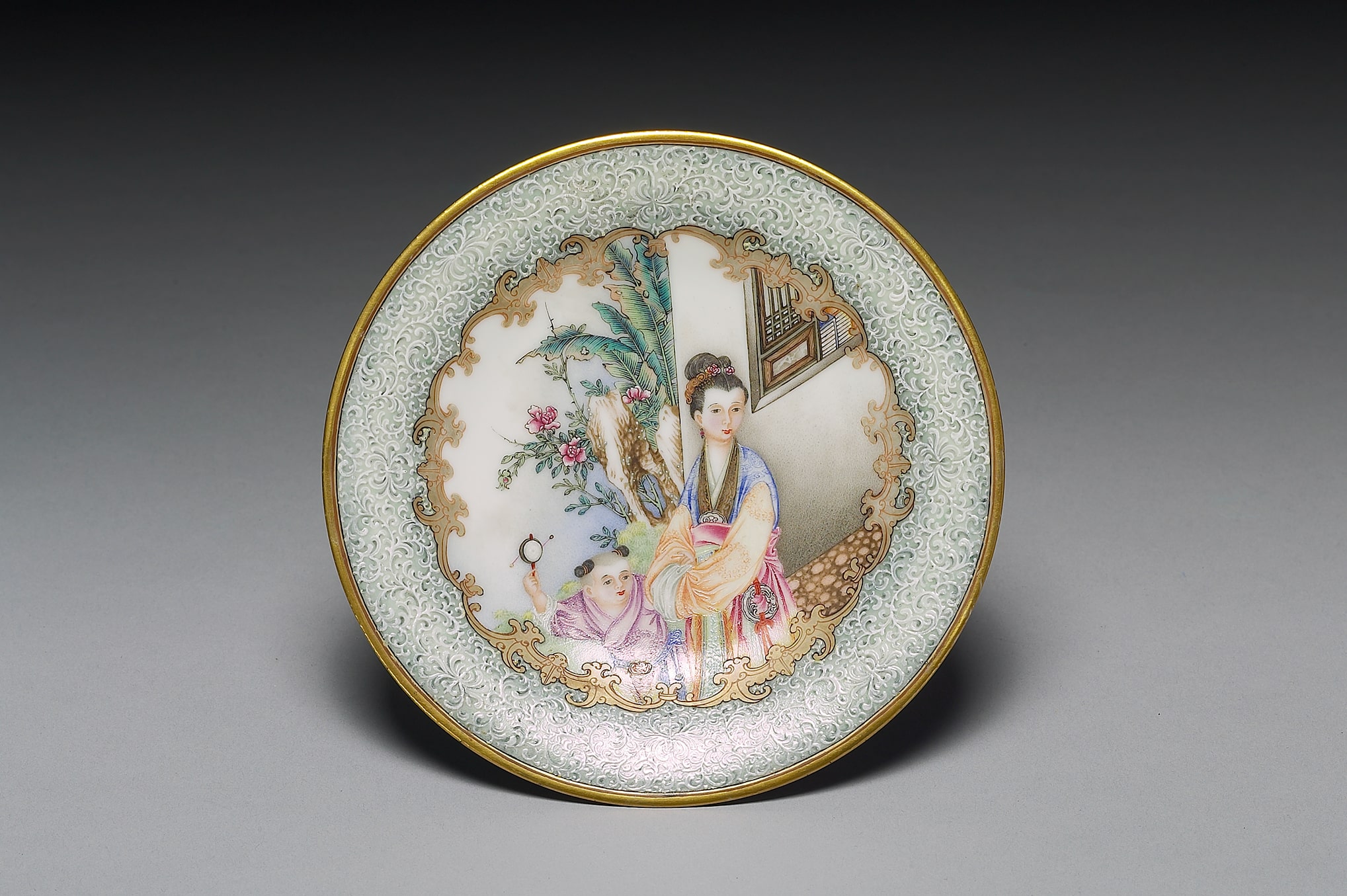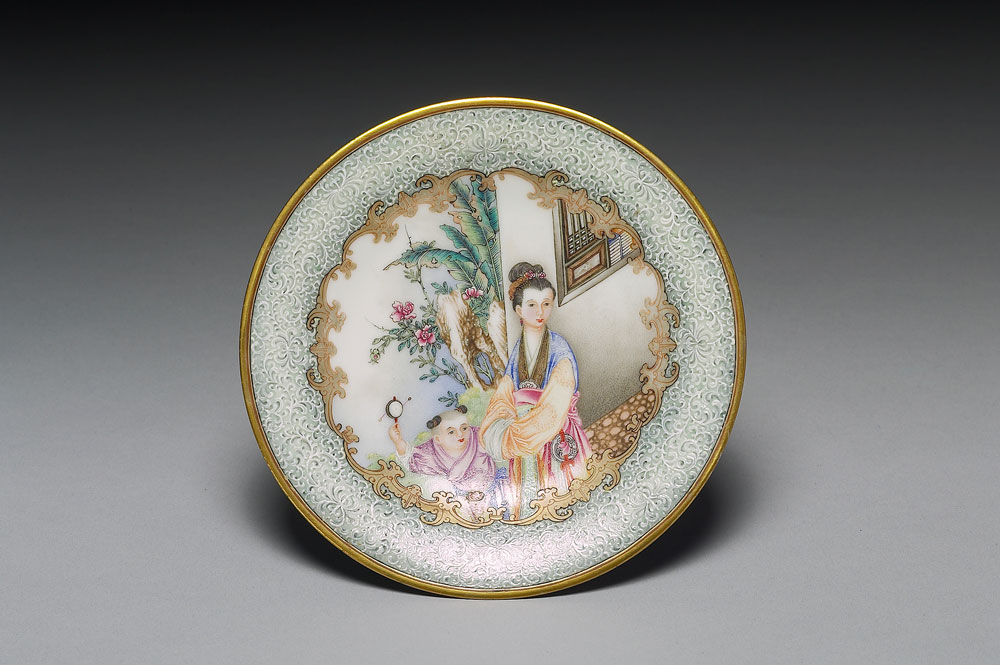Imperial Design & Craftsman's Skill
Continuing the development of the Kangxi and Yongzheng reigns (1662-1735), the porcelain with painted enamels of the Qianlong reign (1736-1795) shows the spirit of striving for new designs. From the angles of form, decoraton and collecting history, the Qianlong painted enamels could be interpreted through three sections "Connotation of Poems and Narrative of Paintings", "Novelty of Brilliance", and "Storage and Collection".
"Connotation of Poems and Narrative of Paintings" presents those painted enamels inheriting the imperial exclusive styles from the Yongzheng reign (1723-1735). The works are decorated with the divine painting-like composition by the imperial craftsmen. Including the ancients' poems and seals to match the composition, each design presents the characteristics of the previous emperor, but also changes in the details. On the contrary, yangcai porcelain produced by the Jingdezhen craft masters had incorporated the Emperor's poems into the decorations to reveal the style of this period. "Novelty of Brilliance" shows the innovative decorative ornaments appearing in the Qianlong period, including the shared motifs on yangcai porcelain and falangcai porcelain as well as the characteristics solely for each of them. "Storage and Collection" examines the extant wood storages, to retrace the process of categorizing, storing, and packaging of the old Qing court's collection and new additions of 18th-century potteries.
Novelty of Brilliance
The decorative patterns of Qianlong's porcelain with falangcai painted enamels can generally be divided into two categories. One is artworks with written poems and patterns of profound connotations, as seen in exhibits if this section. The other one is with the depiction of paintings, flourishing on divine compositions. This section would like to recommend the innovative patterns which are exclusive to the Qianlong reign. First, the portraits presenting the clear profile and vivid facial expressions on the literati, gents, eighteen Lohans , the "Mother and Child" motif from the East and West in distinct styles, and the Western lady, all grasp the attention of people and arouse their interest to look into the details. Secondly, there comes the pavilion and landscape. There is a series of palatial architecture with eaves touching the clouds, built alongside with mountains and rivers, which presents the ideal of a livable and pleasant place to travel. The third is ones with refined and intricate patterns in polychrome colouration, with techniques of painting, chisel-carving, and appliqué decorations, accentuated by eastern and western blossoms to compose the imagery of adding brilliance on the perfection.
Embroidery Patterns on Porcelain
Different from the technique of using falangcai pigments to achieve elaborate decorations, this set of red or blue works gradually carved out unwanted areas on the monochrome glaze surface, then eventually to accomplish the white patterns on a red or blue ground. Surprisingly, the Islamic porcelains in the latter half of the 17th century also possessed patterns in similar techniques. The intricacy of carving out the glaze colour was perceived by artisans as embroideries on textiles in the early Republic Period, therefore, they named this type of works as the embroidery on a red ground or the embroidery on a blue ground.
Adding Brilliance on the Perfection
The main features sit on the surface in a lighter colour, as if a piece of tapestry embellished with assorted embroideries that gives a glamorous effect, which is named as " Jingshang Tianhua (adding brilliance on the perfection)". The archival record shows, proximately around the year of (1740-1741), the " Jingshang Tianhua " motif had become a common pattern. In general, the yangcai porcelains mostly possess the chisel-carved pattern of Huguenot fern, while the falangcai works have variations of carve-outs, brush-drawings, and appliqué-paintings. All of the above deliver the optimal refinement to achieve its full glory, which is possibly the signature style of that era.
Candy-like Colours
In the Kangxi period (1662-1722) most of the enamel pigments were imported from the West. It was not until the 6th year of Yongzheng reign (1728) that the Imperial workshop comprehended the technique of extracting enamel pigments. Since then, acquiring pigment was not a problem. The craftsmen shared the new local-made pigments with the craftsmen of the Jingdezhen Imperial kilns. Besides, the pottery supervisor's document shows that in the Qianlong reign (1736-1795) the new colours make modulating colors different. Whether it is clear water, glue and oily medium, they all can be the material to blend colours. They can also generate candy-like colours such as bright yellow, tender green, purplish red, pastel pink and pinkish green, all of them are new trendy colours in the Qianlong period.
Multiplied impact of colours collaboration
Porcelains produced in the 18th century had ones with yangcai enamels and others in falangcai enamels; although the location of painting decoration differentiated the two by inside or outside the royal court, nonetheless, the production was almost simultaneously, and they also shared the decorative motifs. From the perspective of the pottery supervisor, Tang Ying (1682-1756), the yangcai porcelain he managed were all produced under the goal of imitating the falangcai porcelain. From the angle of the Emperor inside the Forbidden City, he demanded to store these two types of polychrome porcelains into one category at one location. Therefore, under the concept of "one" official ware, the two glazes from the Qianlong reign (1736-1795) had delivered the multiplied impact of colourful combination.
Yanghua Yangcai
In the 2nd year of Qianlong reign (1737), delivery arrived in the Imperial court with the latest production of porcelains. However, only the "Bowl decorated with occidental flower ( yanghua ) in yangcai painted enamels on a yellow ground" reached the standards of Qianlong. Amazed by the novelty and gorgeousness, the Emperor had demanded to increase production. Then, how do patterns qualify for the definition of " Yanghua yangcai "? With yellow glaze covering the ground and painted with intense coverage of intertwining branches adorned with vividly bloomed blossoms; the style, distinct from the previous eras is categorized as the "occidental flower on a yellow ground". Qianlong had further inquired about additional firing in the 4th year (1739), the 11th year (1746), and the 12th year (1747) of his rule. Consequently, the yanghua is reckoned as the iconic pattern of yangcai porcelain from the Qianlong reign.
High-quality Yangcai Porcelain
According to Tang Ying (1682-1756), the pottery supervisor, the Imperial kilns aimed to produce the yangcai porcelain with the same result as that of the falangcai porcelain. Therefore, when the potters drew the illustration, they paid attention to the details and wished that decorative patterns achieved the same result as painting. In the 7th year of Qianlong reign (1742) their hard work finally paid off. When the Emperor made the imperial decree to collect and store the yangcai porcelain, he graded part of the products "excellent", including two gall-bladder-shaped vases with "Crane Bringing Fortune and Joy" motif. It shows that both yangcai porcelain and falangcai porcelain were in the same grade under the system of official ware.
Western Mother and Child
The glamorous Western ladies stand for one of the distinct characteristics of falangcai porcelain in the Qianlong reign, including shepherdess on the lid of a box and the "Mother and Child" motif as seen on the vase with paired handles. The use of chiaroscuro technique that complemented with pastel colours enhanced the features on figures' faces, and brightened up their expressions. In order to investigate the context of the imagery's appearing, there are at least two directions to pursue. Once we lay eyes on the mother-and-child motif as seen here, however, it highlights the innovated style of the Qianlong reign that embraced all themes in variety.
Goldfish and Aquatic Plants
Aspired to have achievements transcending previous reigns might be the longing of the Qianlong Emperor, consequently, he seized every opportunity to give his opinions on the productions of official wares. The first year of the emperor's enthronement, he unexpectedly mentioned that the paintings on the snuff bottle were too sparse, and he requested the craftsmen to paint to the fullest for the next production. As seen from the exhibits, many of the porcelain bowls have interior base adorned with paintings, one of which is the goldfish with two or three tails, swimming freely among the aquatic plants.
Style of Two Painted Enamels
Depending on where the decorative ornaments were depicted, Qianlong painted enameled works can be divided into products of the Imperial workshops and products of the Jingdezhen Imperial kilns. However, both of them are all belonged to the official wares. Even though the artisans were different, it is possible that one work shows the combination of ornaments from two styles. The Lohan vase, saucer with flowers and birds and saucer with antiques and flowers are the examples.
"Kezi (Mother Tutoring Child)" Motif
The "Kezi " motif takes on the theme of mother and child, and it is one of the signature decorations of Qianlong's porcelain in falangcai painted enamels. From the child reading a book, the mother writing with a brush, to the moment that they appear in the garden and about to play, the exquisite composition and detailed depiction of window frames and ancient artefacts have all celebrated the daily life in the court to the finest state.
